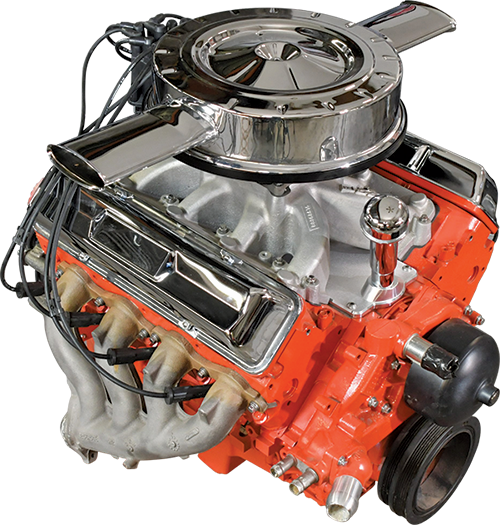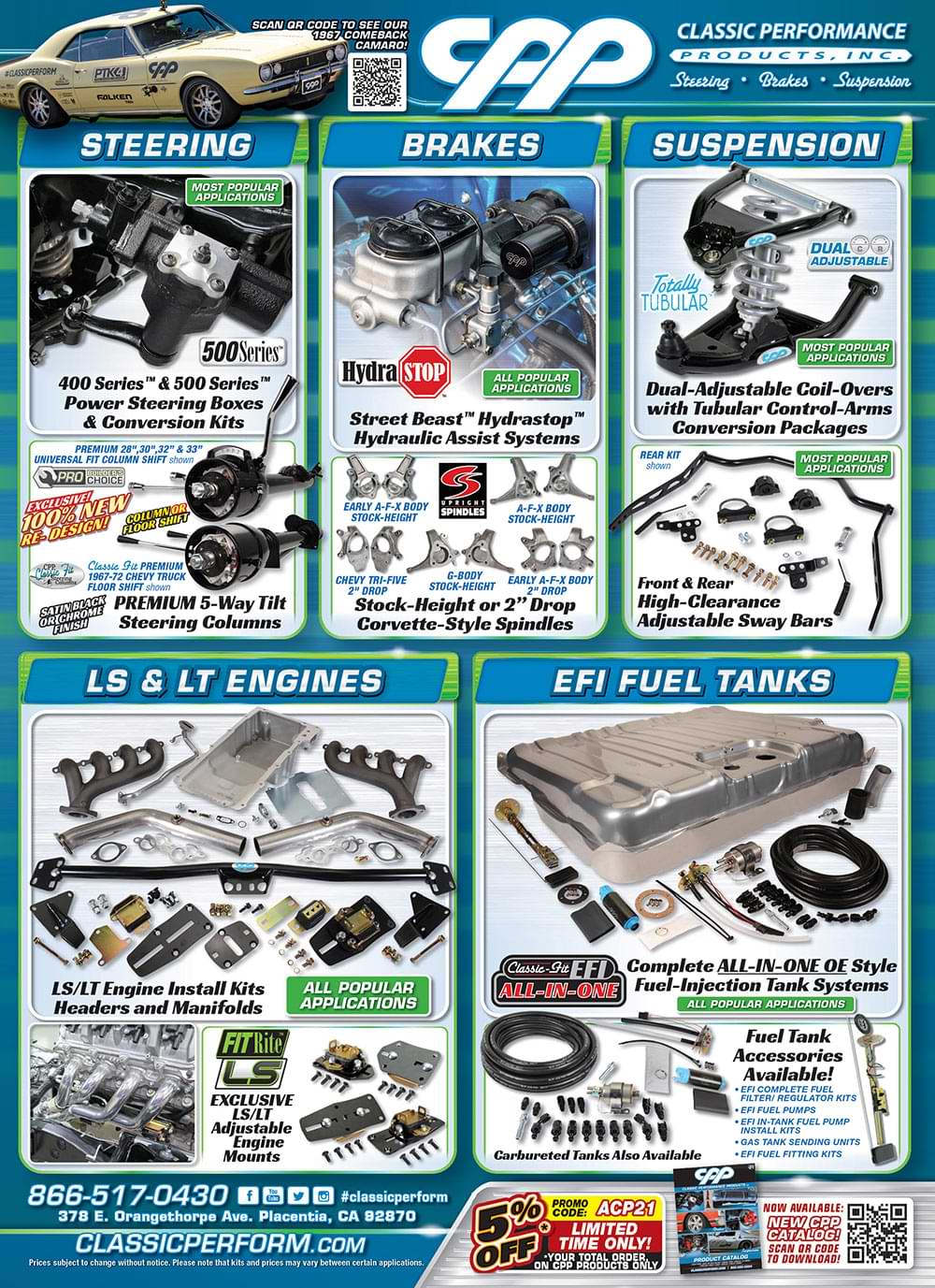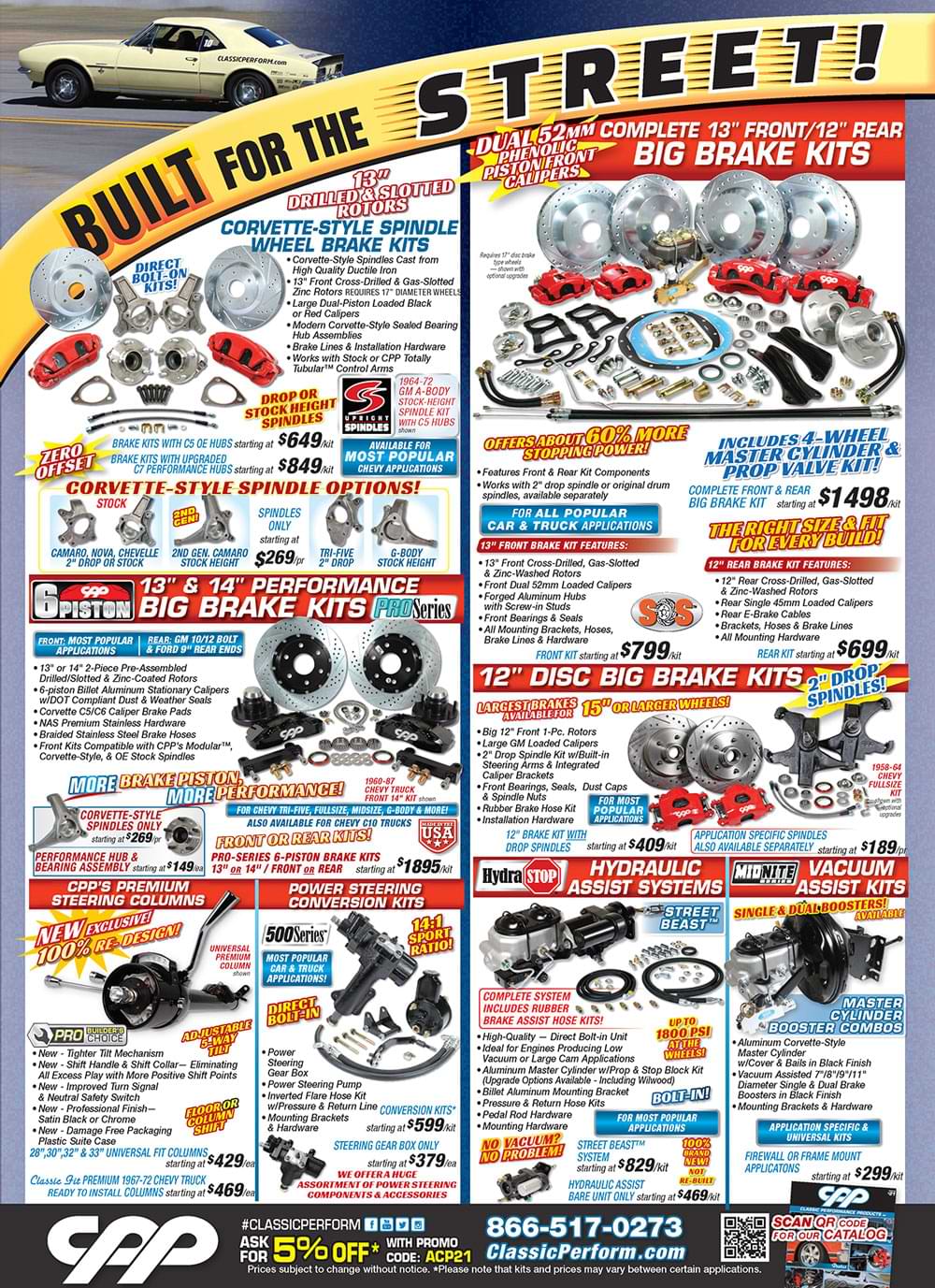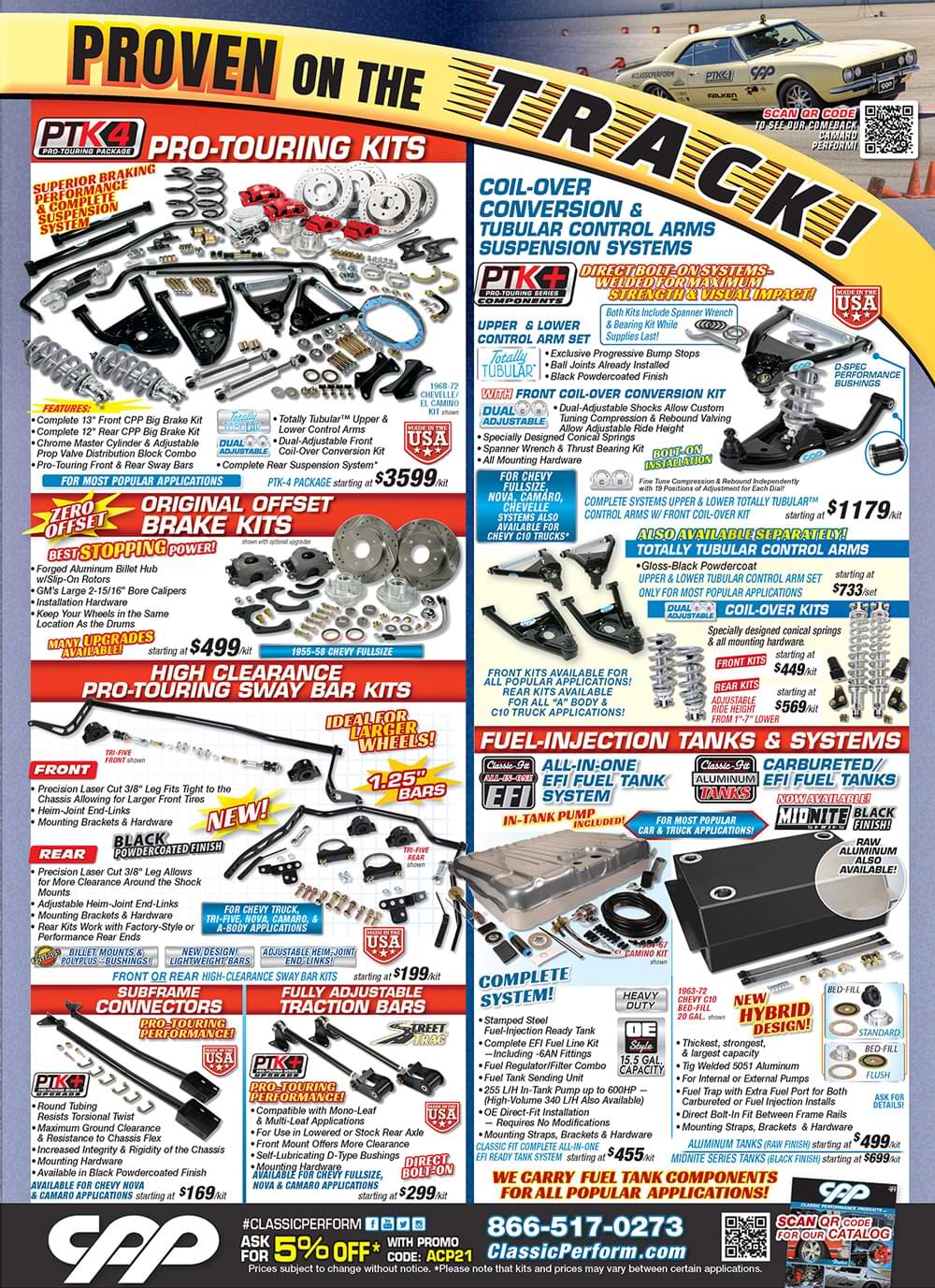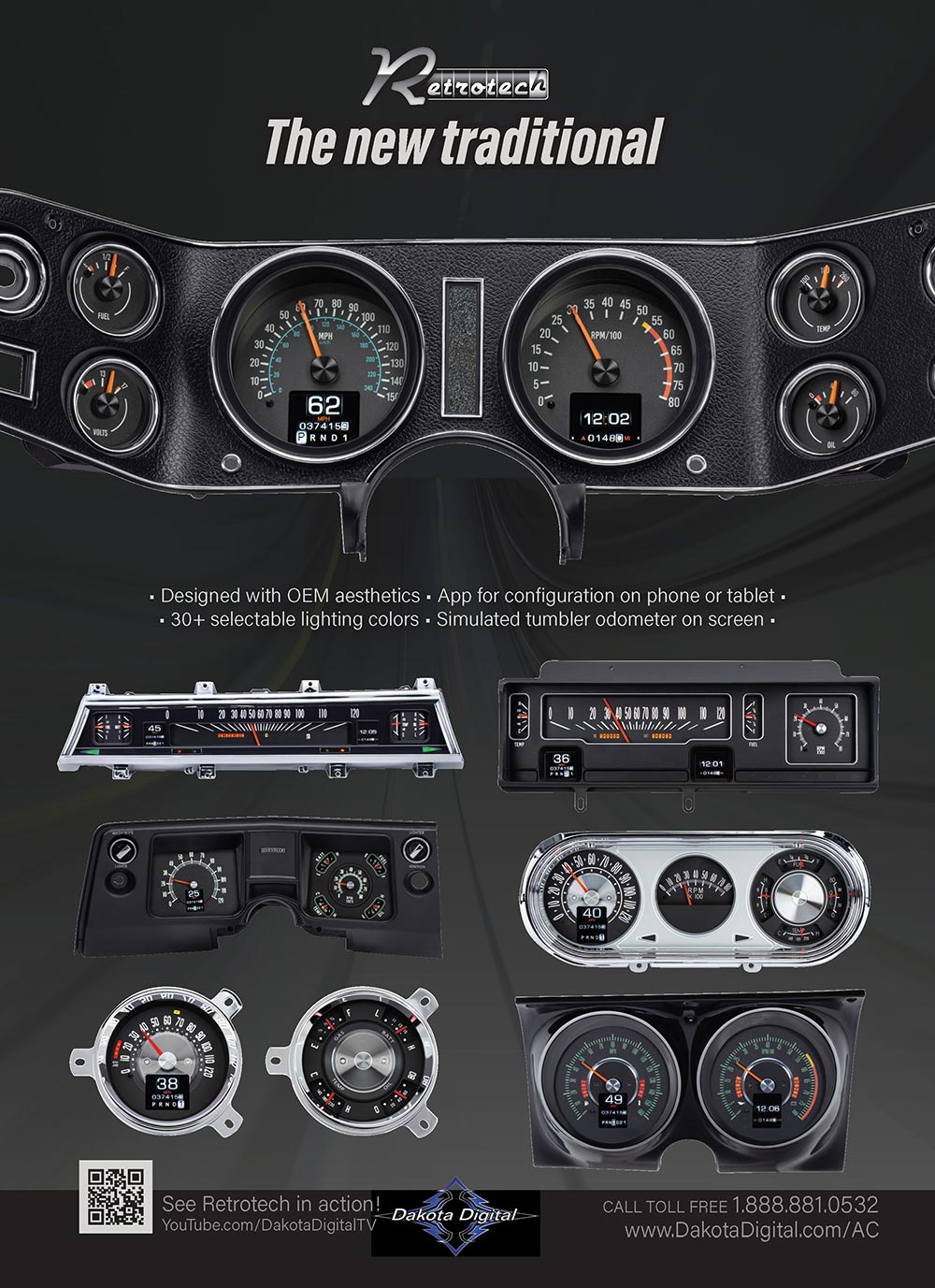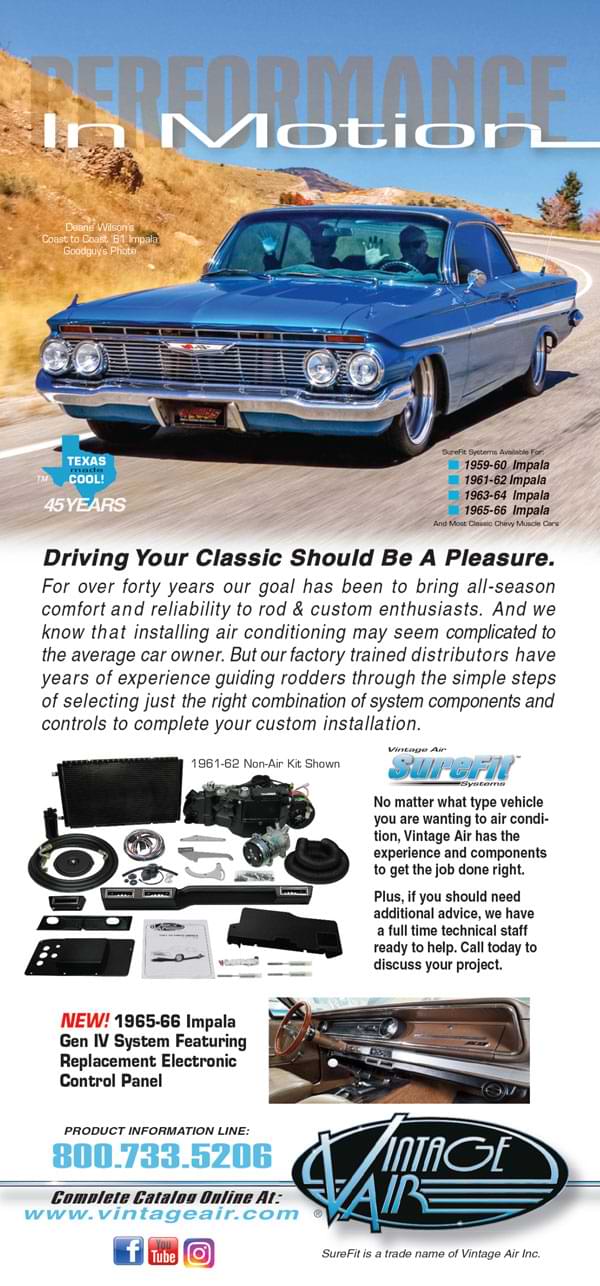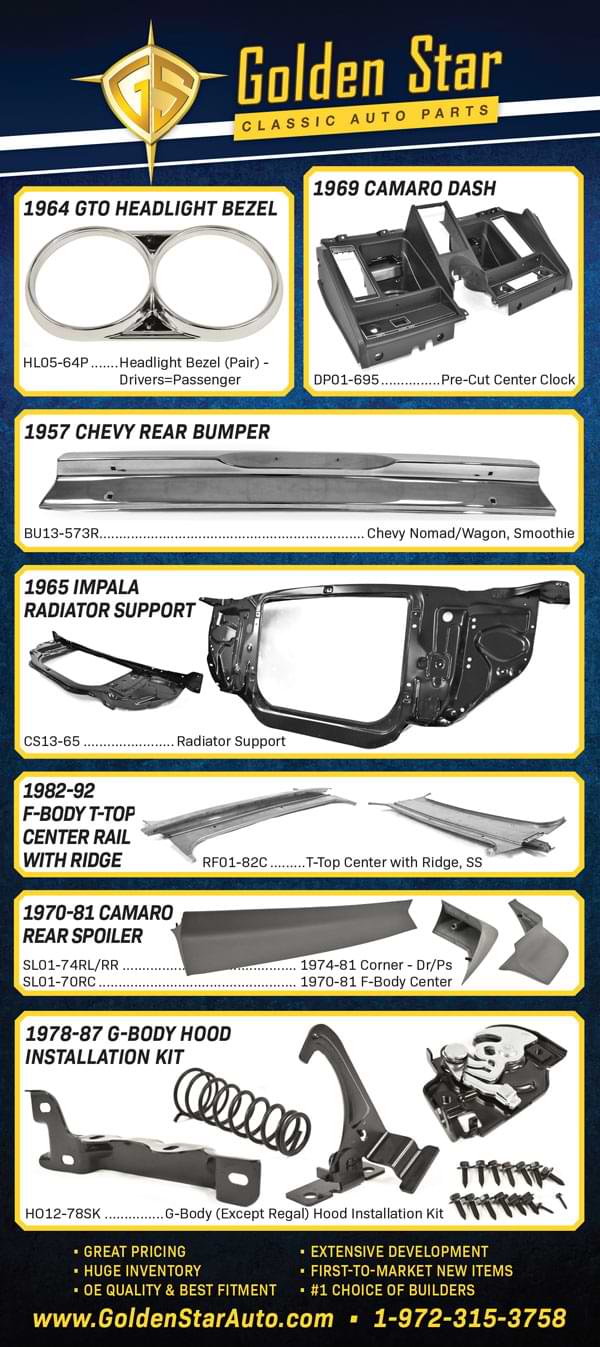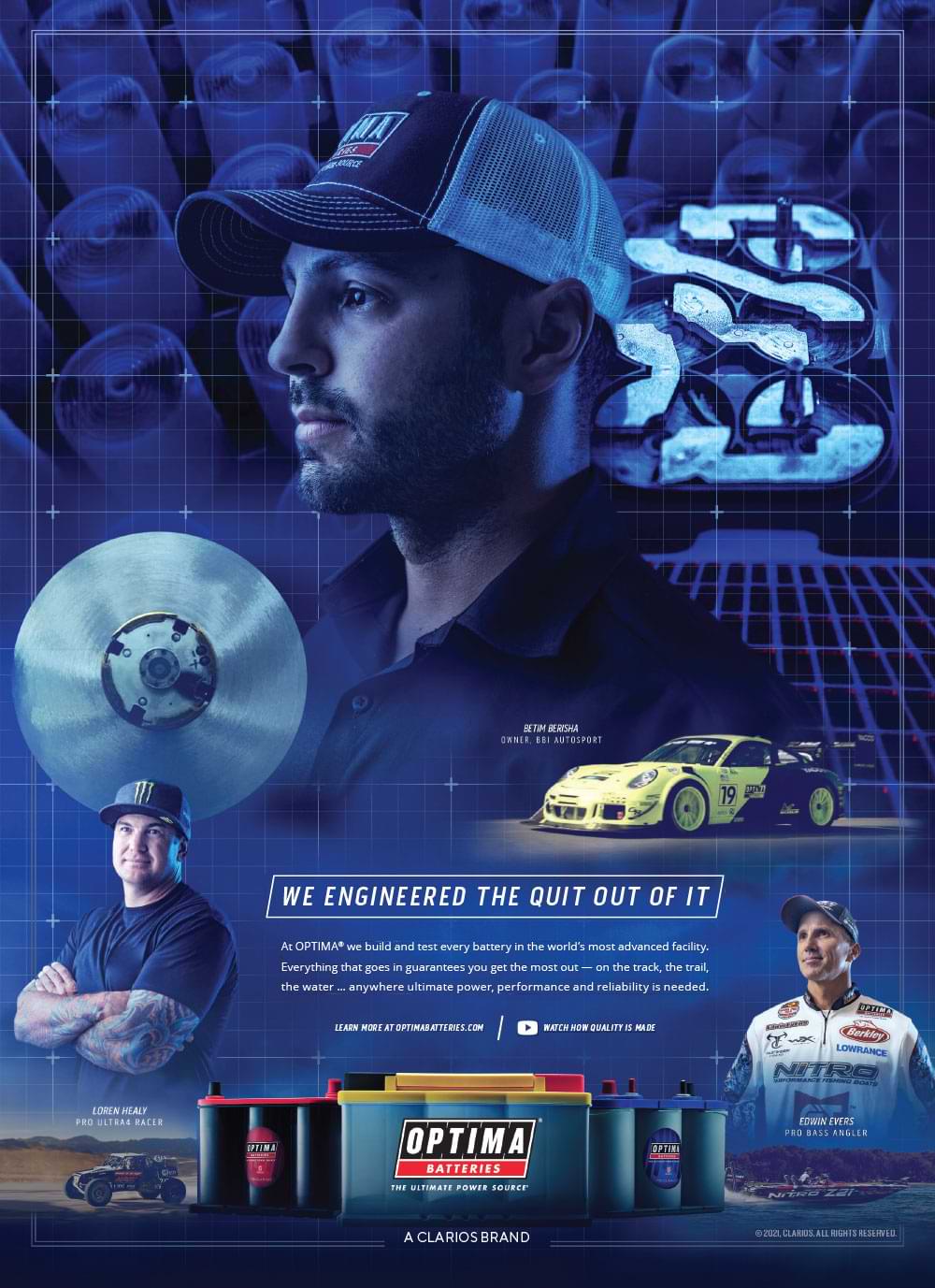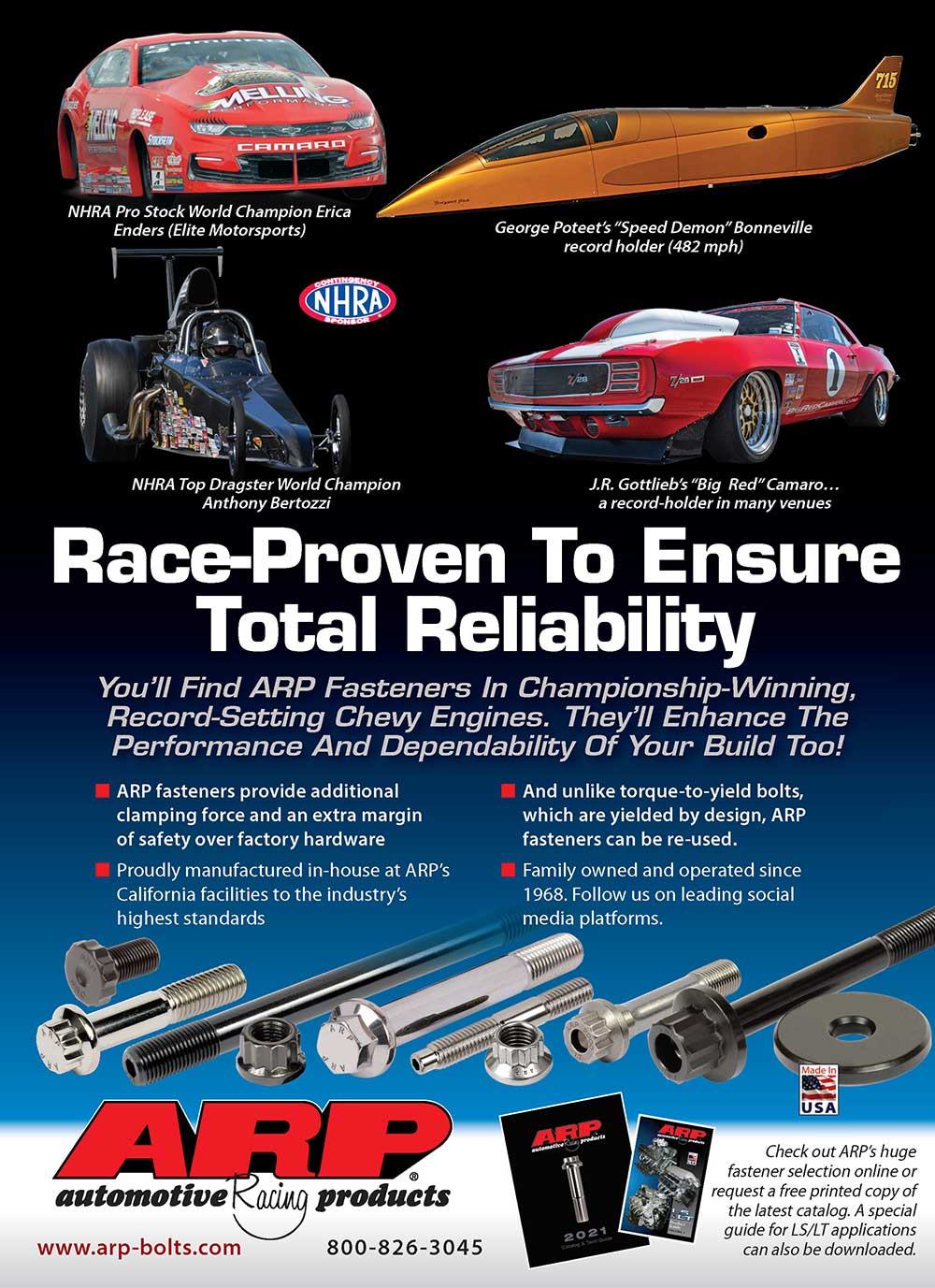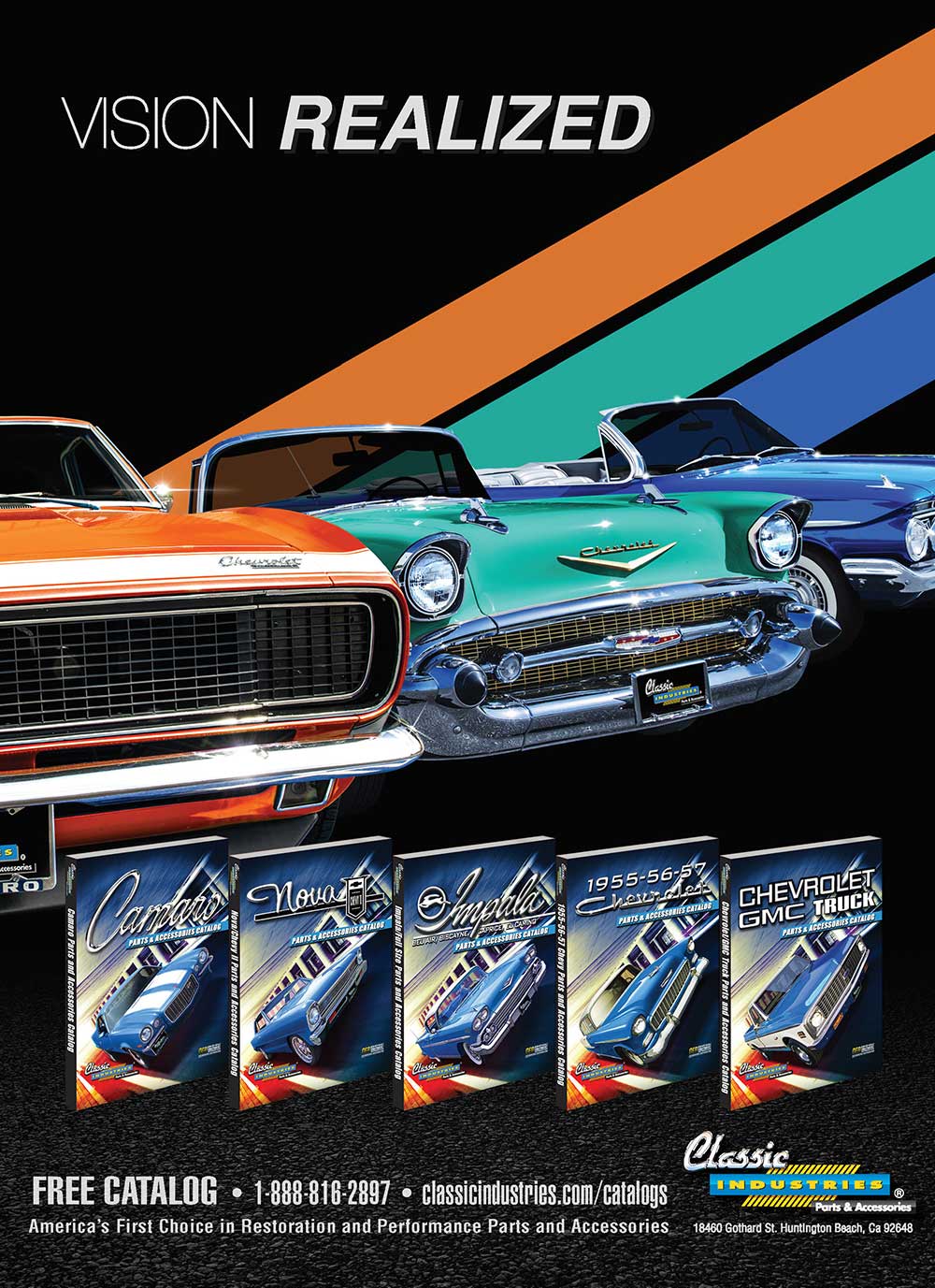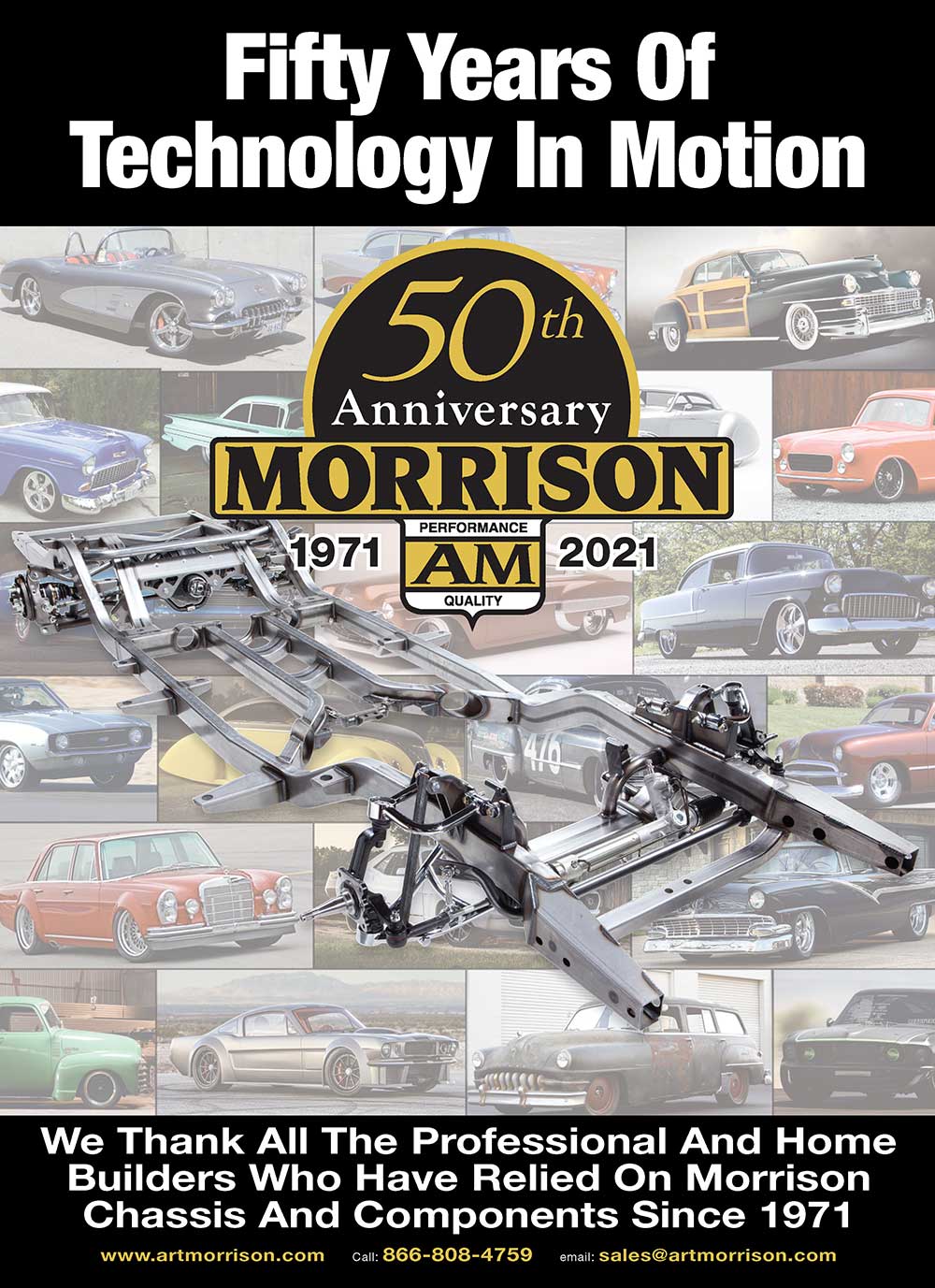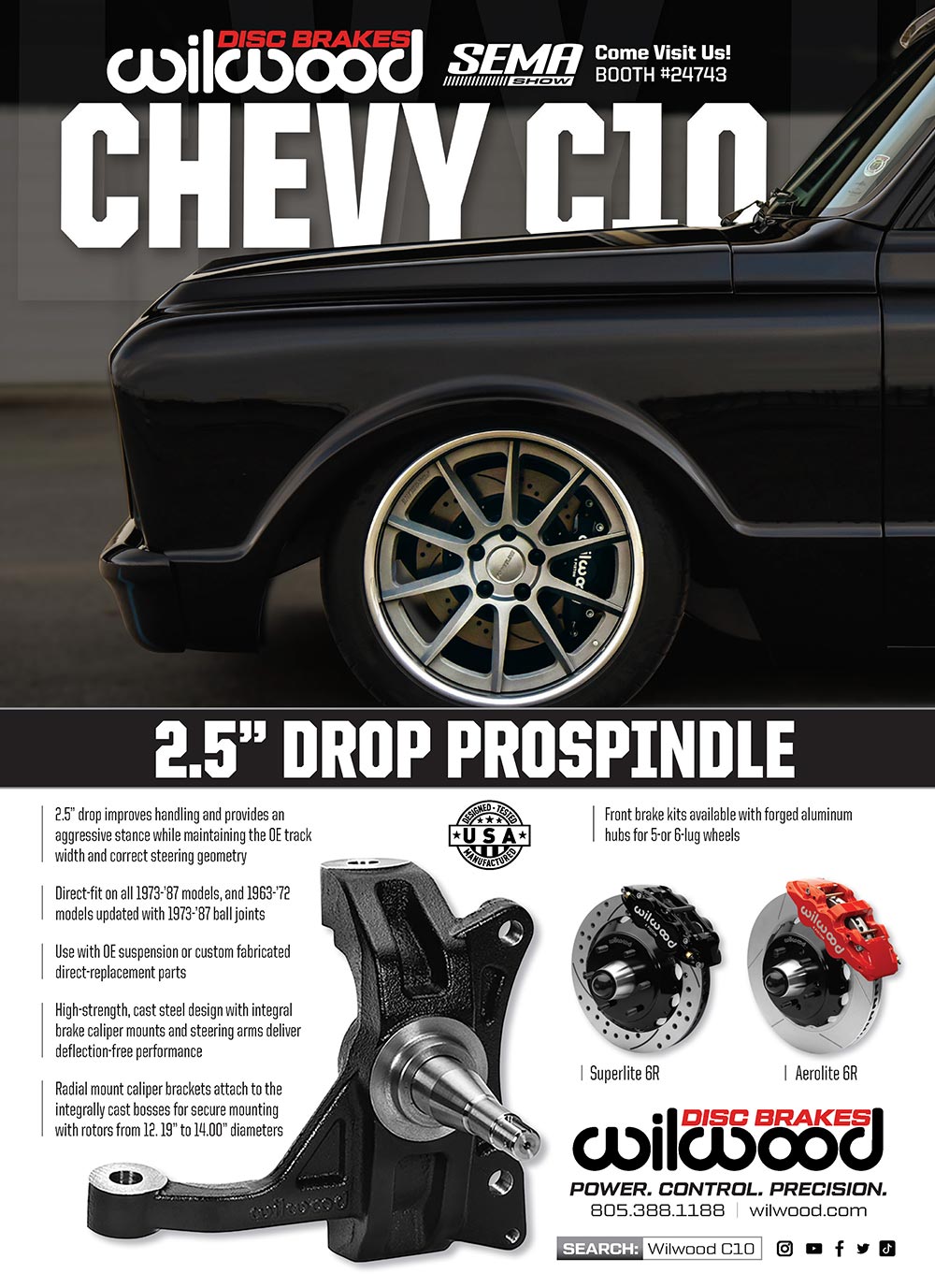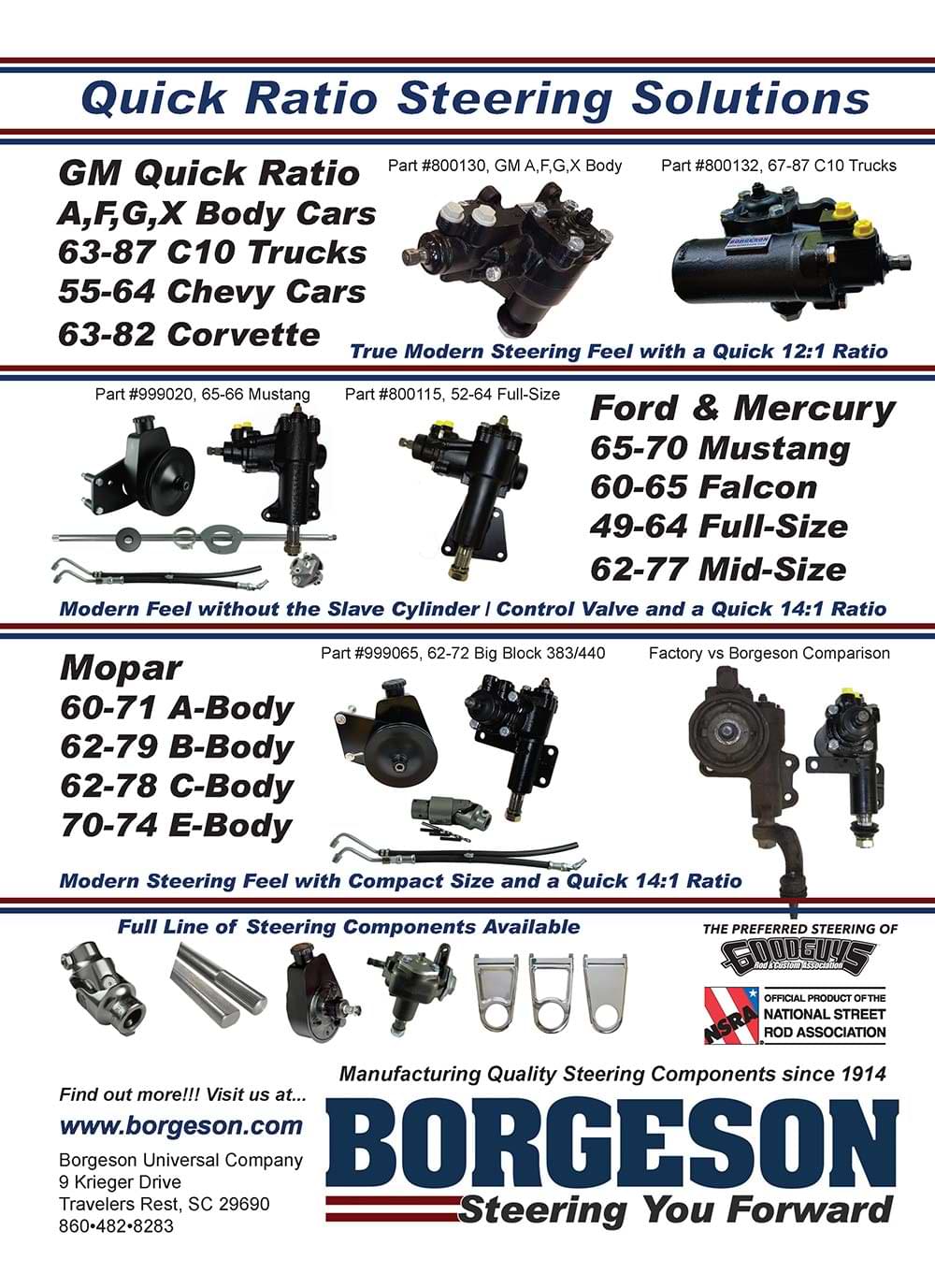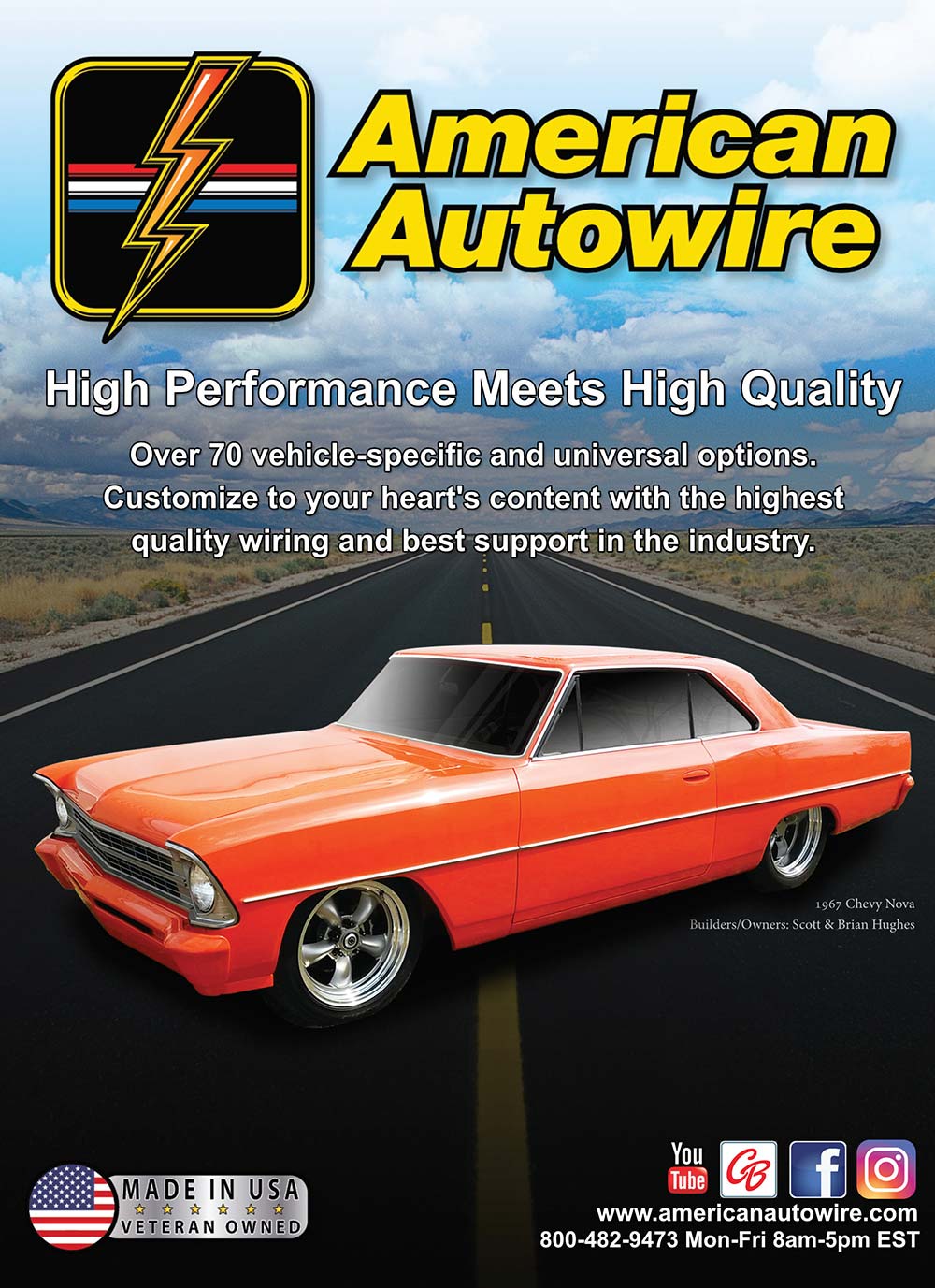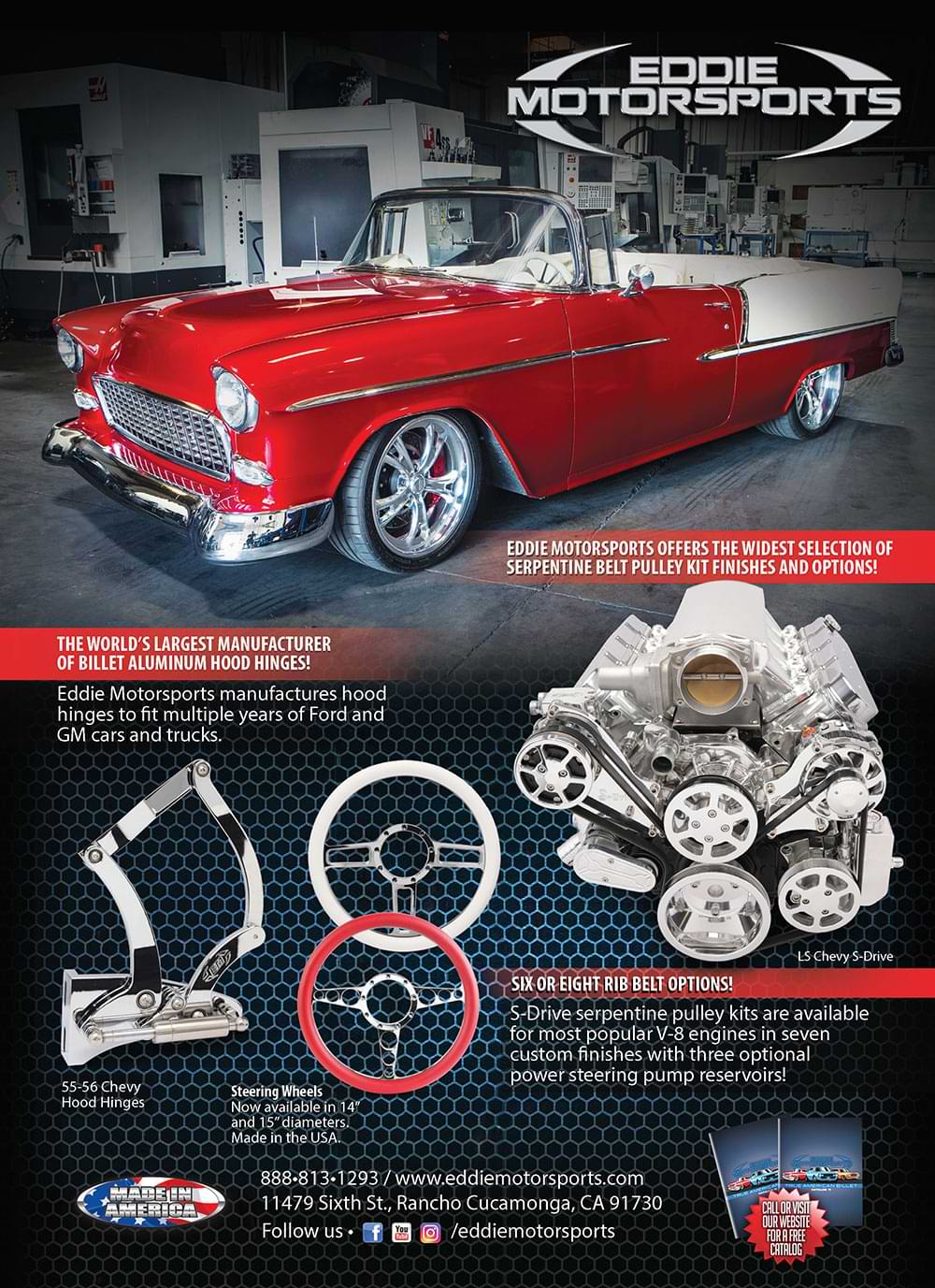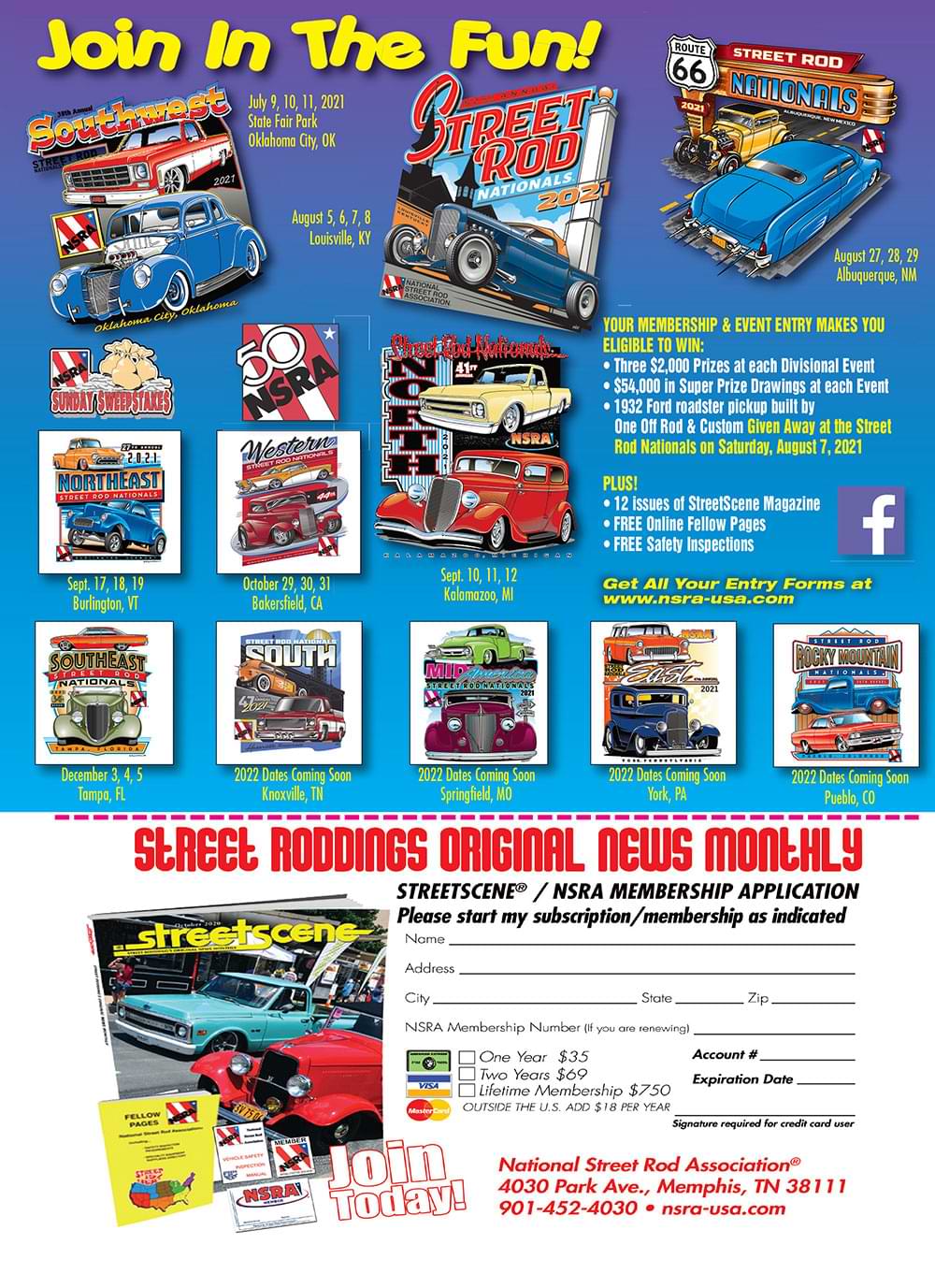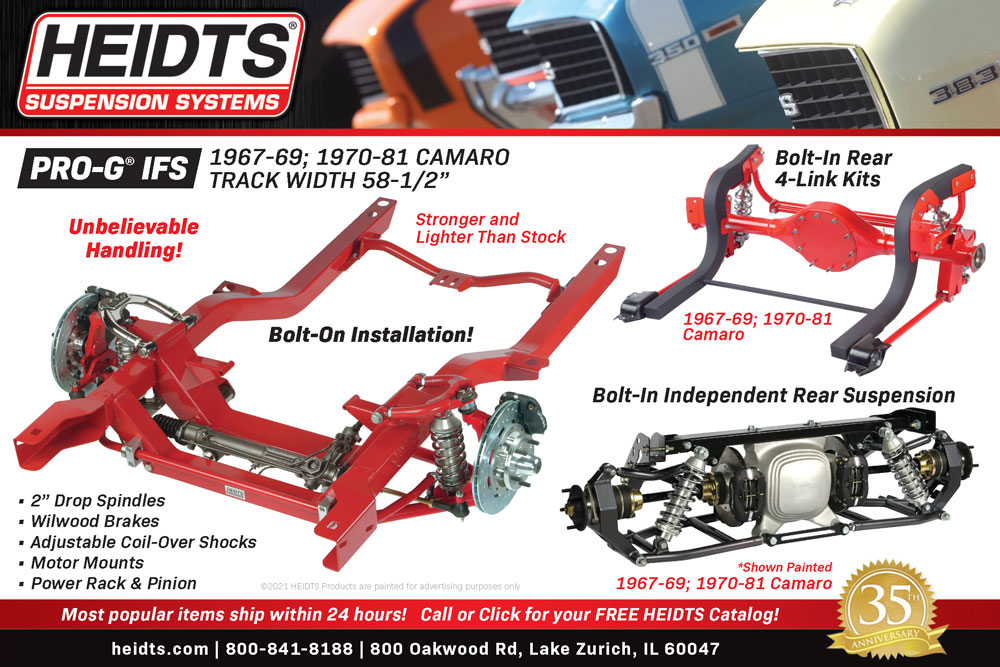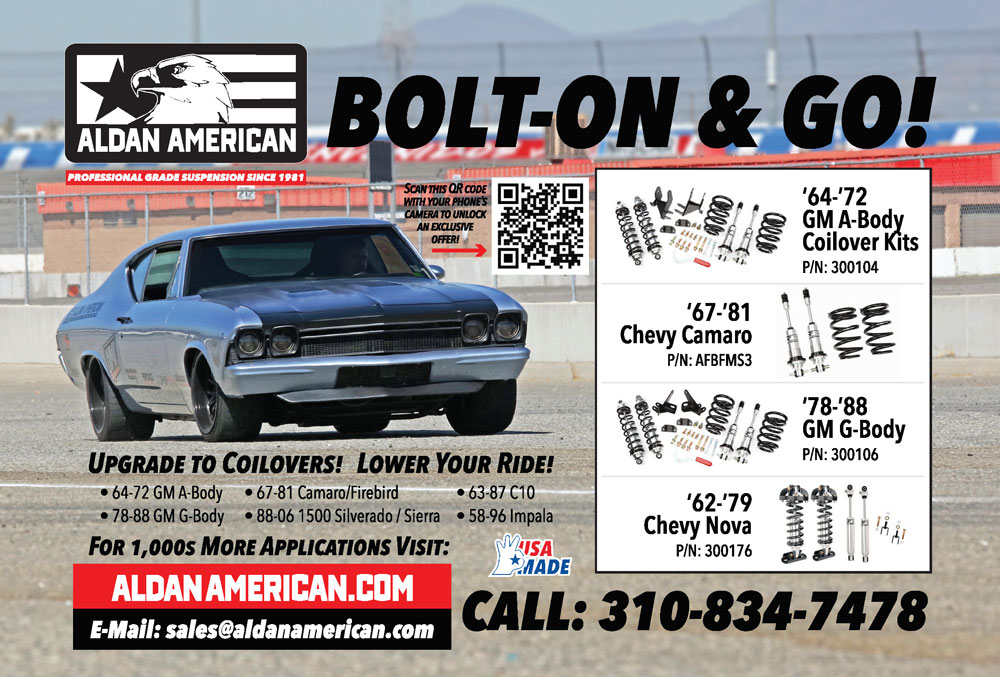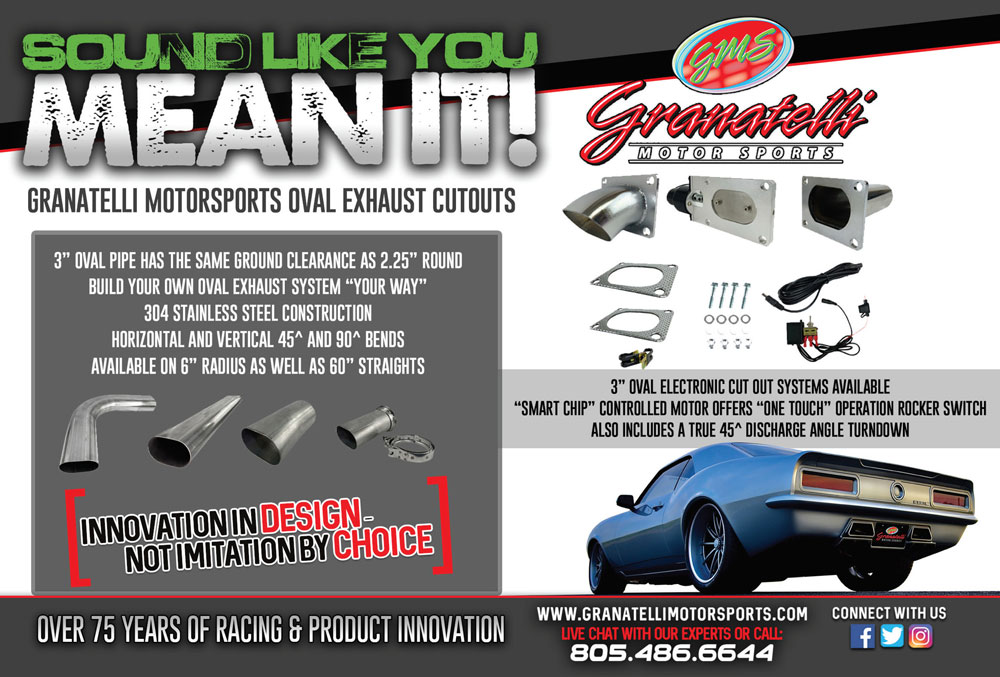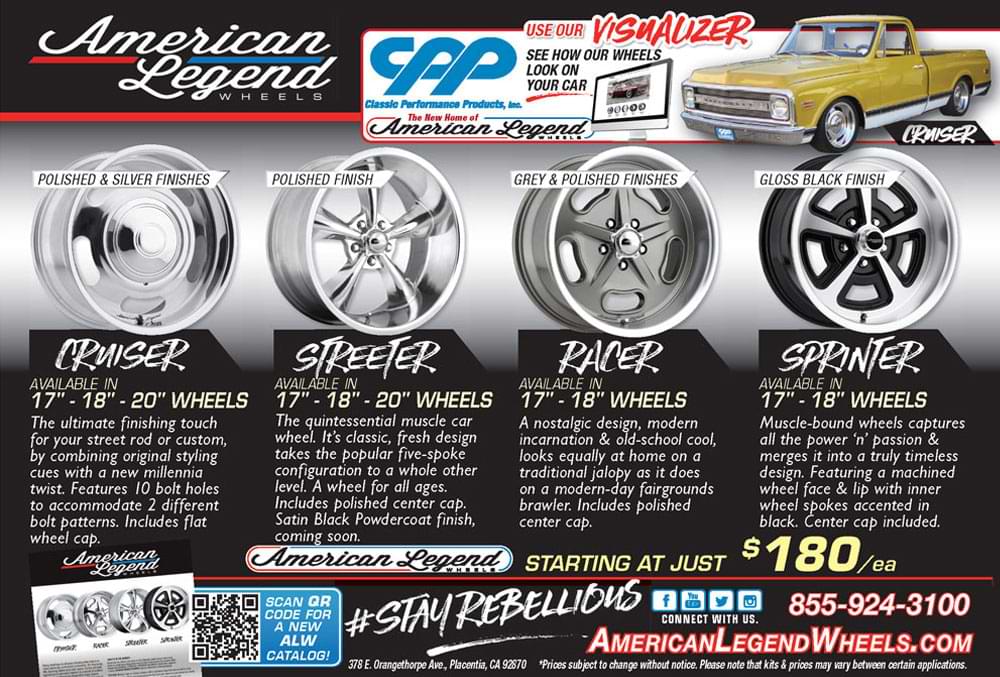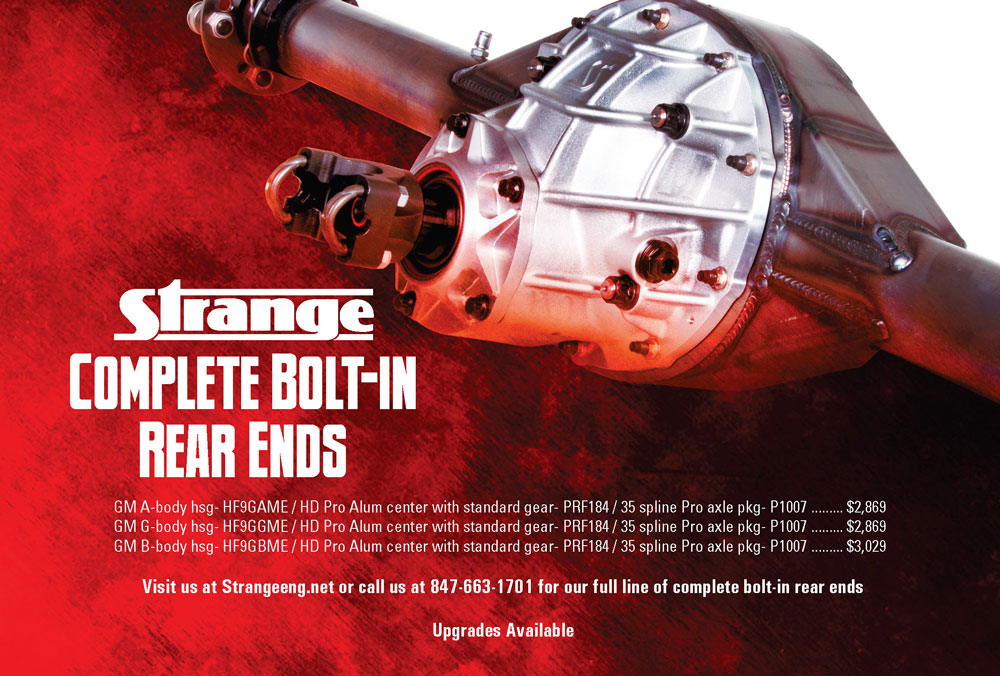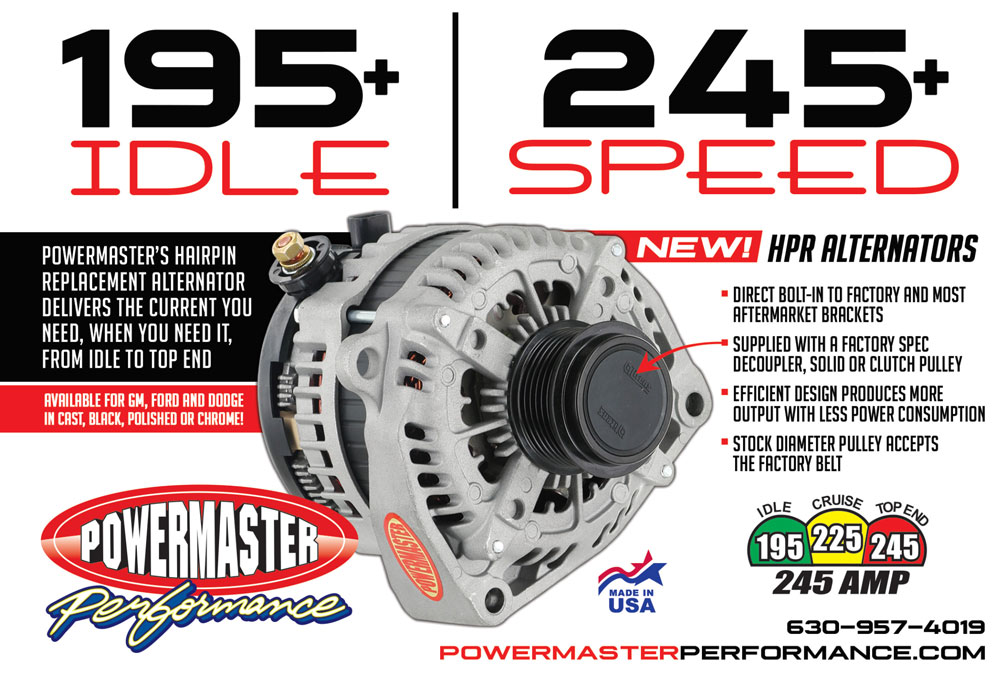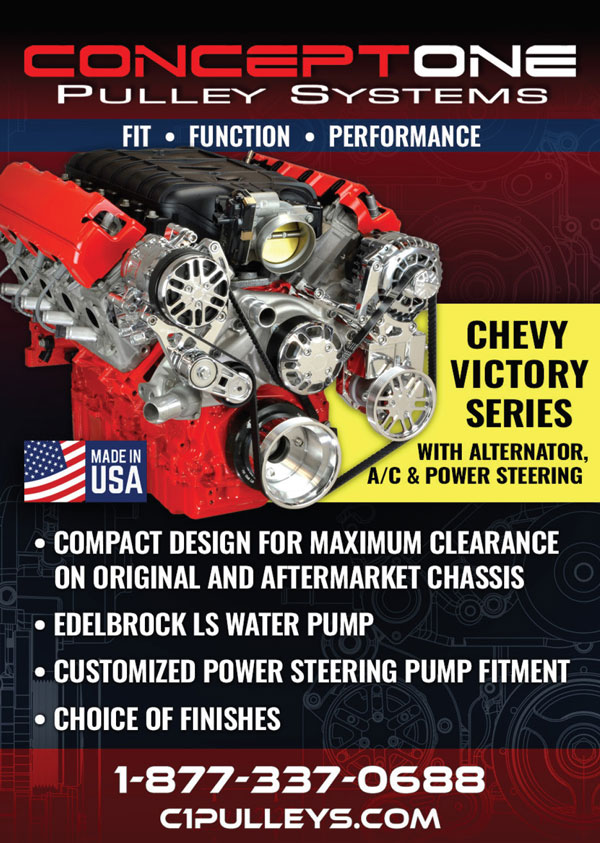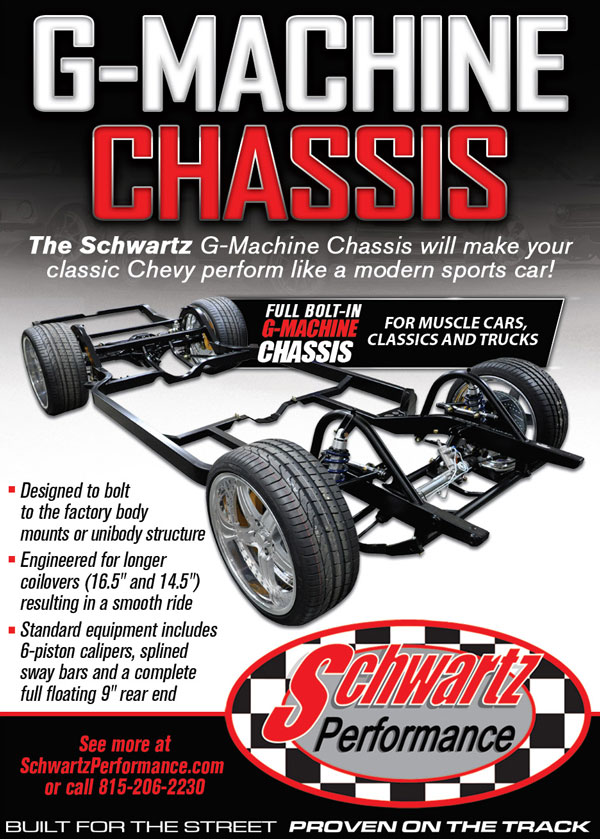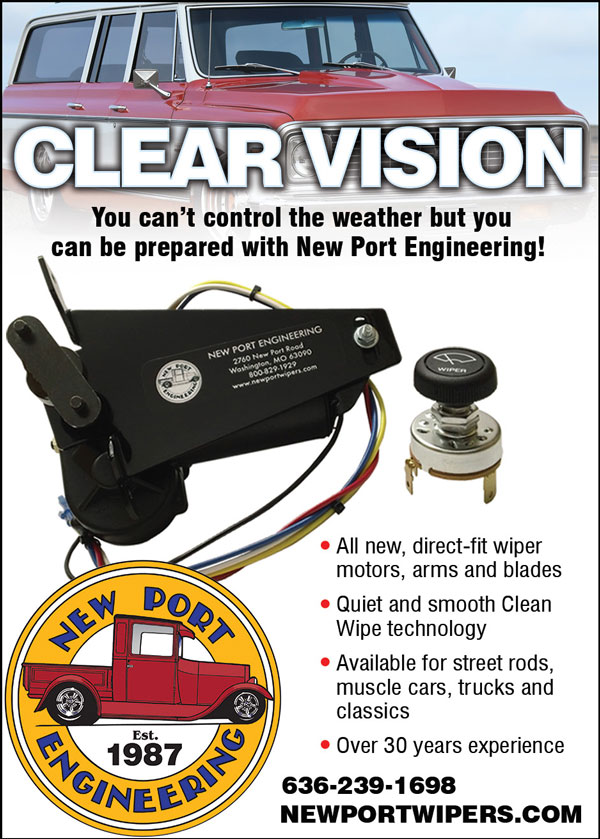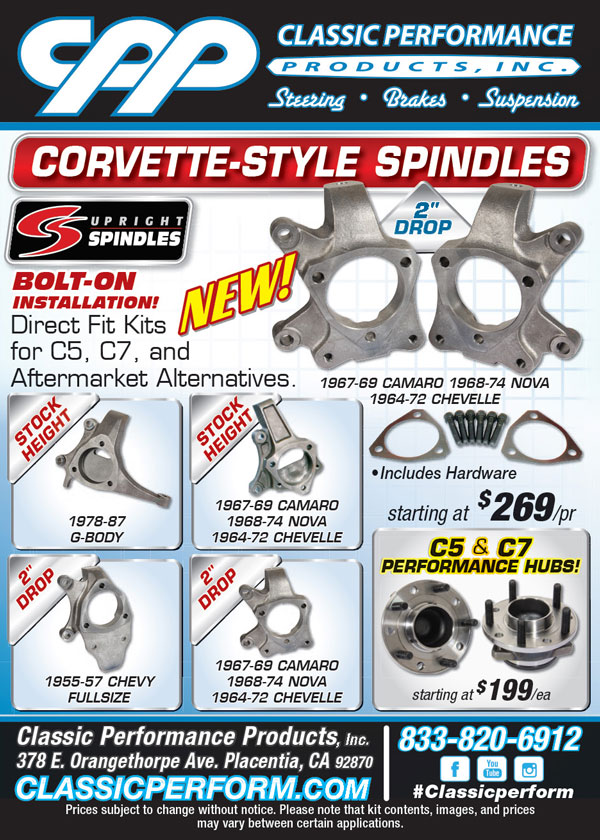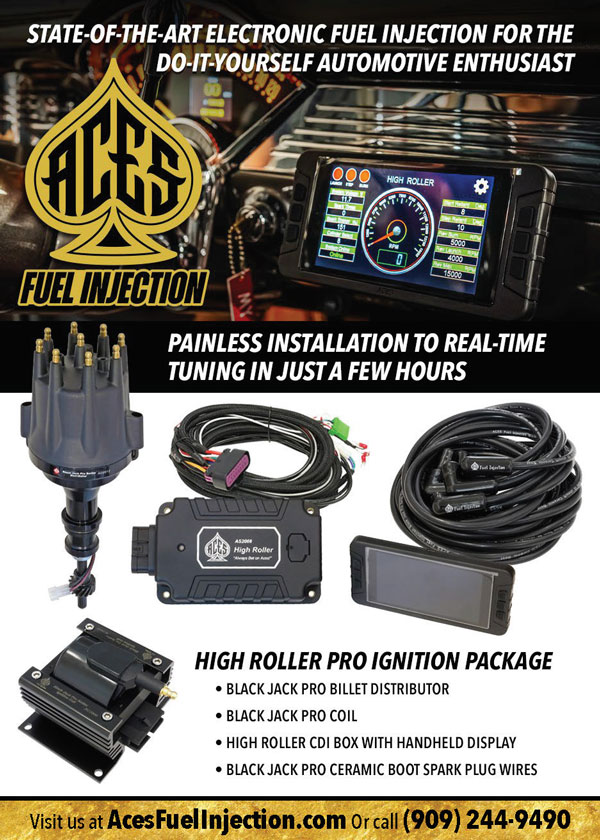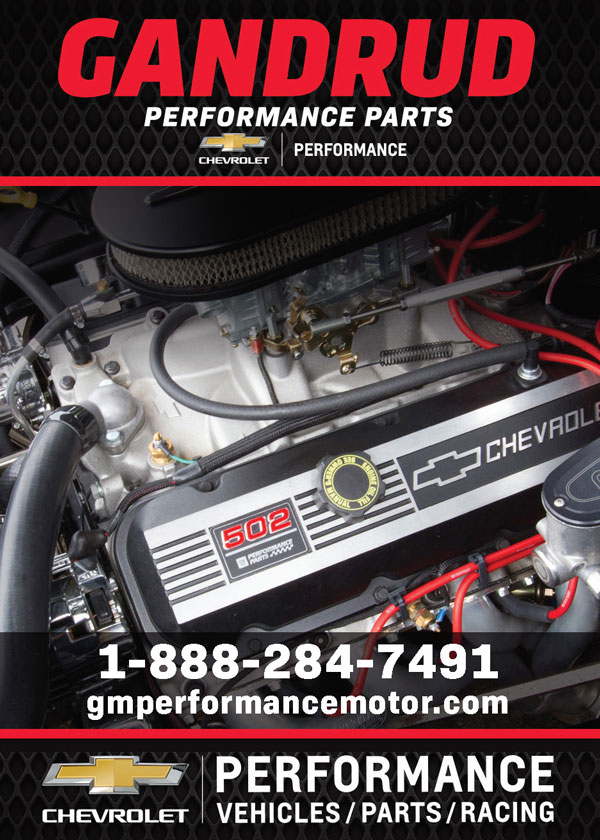 TOC
TOC

Photography by Wes Allison





ROB MUNOZ
Wes Allison, Tommy Lee Byrd, Ron Ceridono, Grant Cox, Dominic Damato, Tavis Highlander, Jeff Huneycutt, Barry Kluczyk, Scotty Lachenauer, Jason Lubken, Steve Magnante, Ryan Manson, Jason Matthew, Josh Mishler, Evan Perkins, Richard Prince, Todd Ryden, Jason Scudellari, Jeff Smith, Tim Sutton, and Chuck Vranas – Writers and Photographers
AllChevyPerformance.com
ClassicTruckPerformance.com
ModernRodding.com
InTheGarageMedia.com
subscriptions@inthegaragemedia.com
Mark Dewey National Sales Manager
Patrick Walsh Sales Representative
Travis Weeks Sales Representative
ads@inthegaragemedia.com
inthegaragemedia.com “Online Store”
info@inthegaragemedia.com

Copyright (c) 2021 IN THE GARAGE MEDIA.
PRINTED IN U.S.A

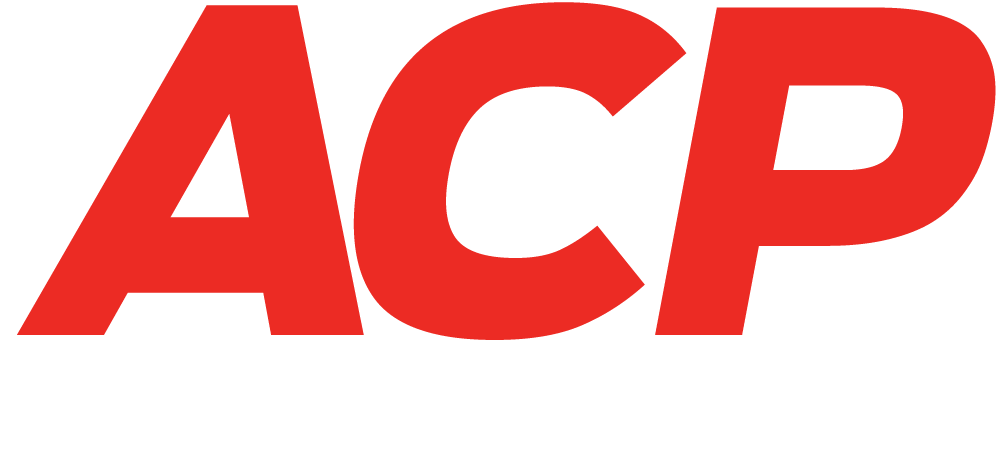

 FIRING UP
FIRING UP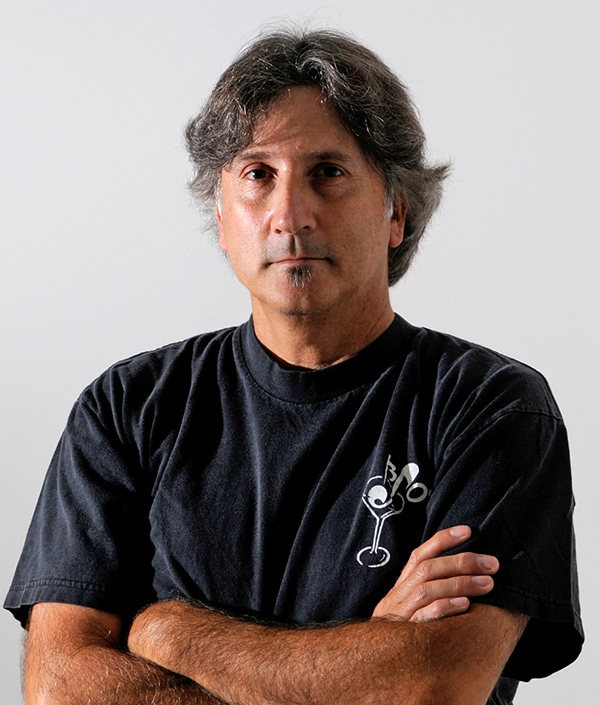
 BY NICK LICATA
BY NICK LICATA
ot rods and rock ’n’ roll–they go hand in hand, like peanut butter and jelly, chips and salsa, bangers and mash, rum and coke, you get the idea. Rock music was and continues to be the soundtrack of car culture throughout the country. Looking back at the movie American Graffiti, where ’50s rock music was mixed into the scenes, it was as if there were speakers wired up and down the boulevard–wired because, you know, no Bluetooth.
With music playing such an important role in the car scene, I’ve decided to put together a Top 10 list of songs that, to me, characterize hot rodding and/or make great driving songs. Now, I know your list will be different than mine, and it should be. Many of you will be thinking ”Dude, how could you leave that song off the list?” Knowing this, I’m probably putting my life at risk, but this is my list and there is only room for 10. It was difficult to leave off so many great songs, as I could have easily listed hundreds more.
 Parts bin
Parts bin By Nick Licata
By Nick Licata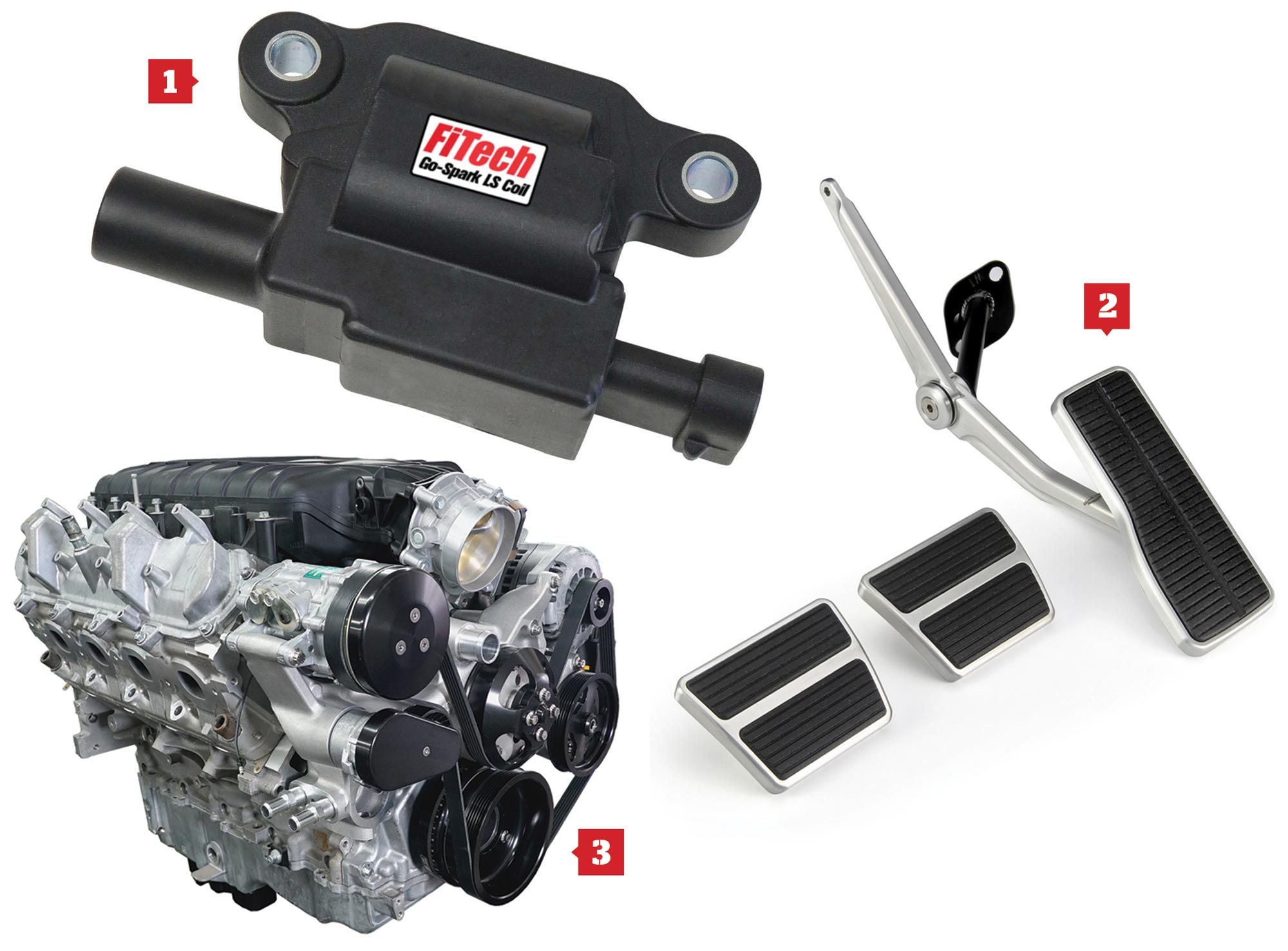
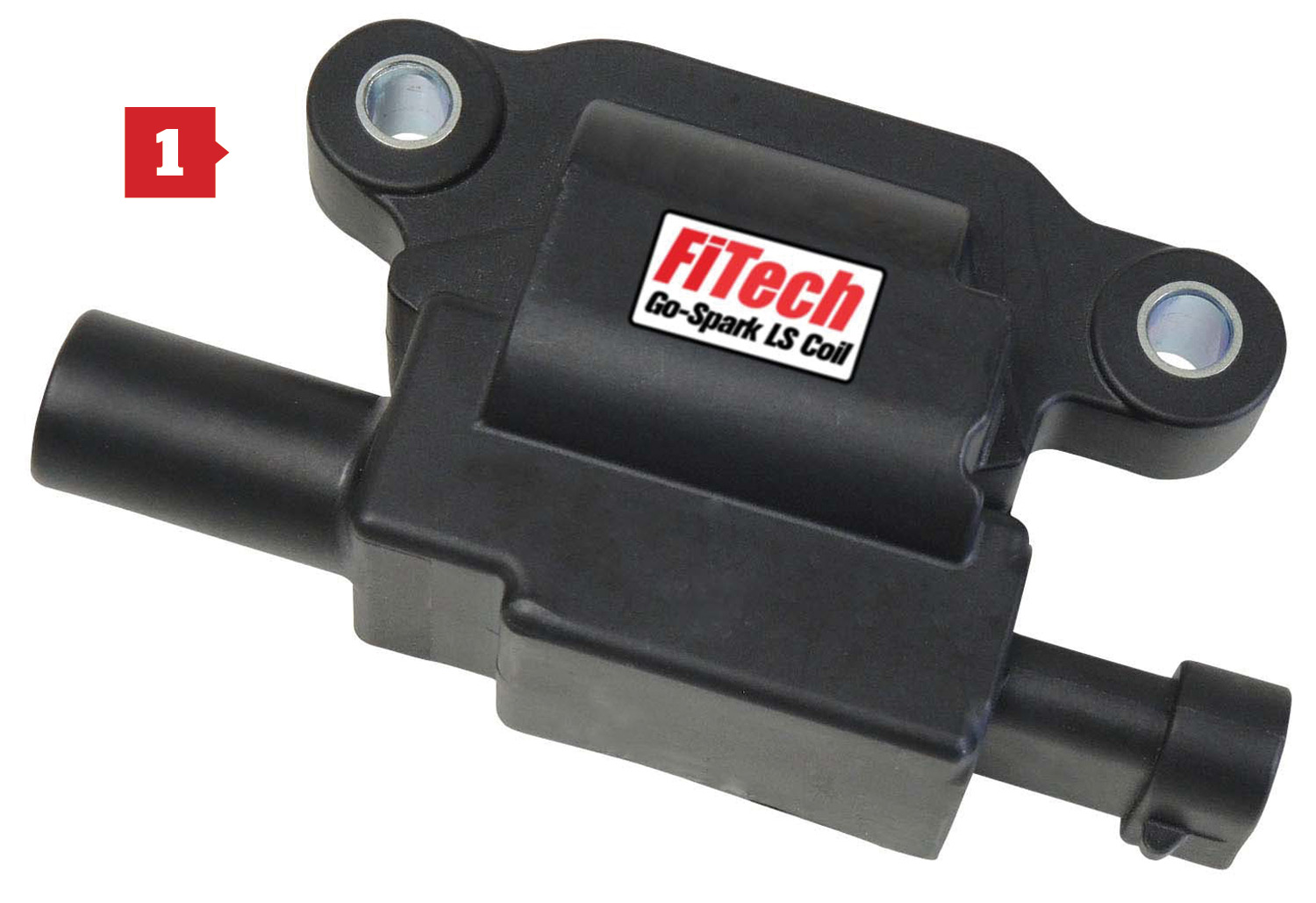

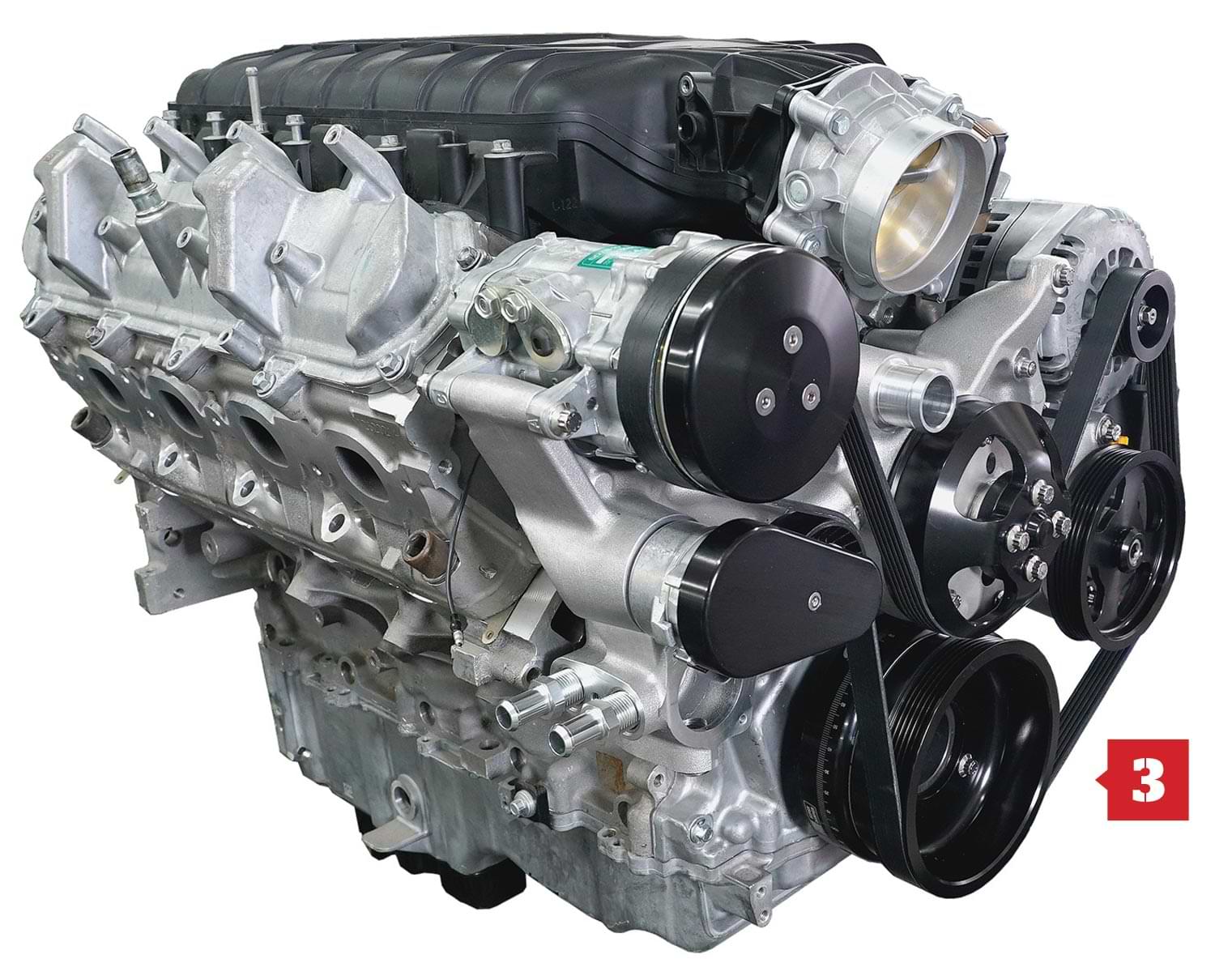
 CHEVY CONCEPTS
CHEVY CONCEPTS

 Text and Rendering by Tavis Highlander
Text and Rendering by Tavis Highlander
ubtle and over the top are both common characteristics of high-end show cars these days. It’s usually one or the other, though. This 1966 Vette is setting out to be both, and if there’s one builder who can manage that task it’s Kyle Kuhnhausen. If you don’t know him, then do yourself a favor and search for InZanity 240Z or Ballistic Beige Corvette.
The overall appearance and general impression of the car is that of a refined yet fairly straightforward, high-end build. Digging deeper is where the over-the-top elements come into play with thoughtful execution. An Art Morrison GT Sport chassis provides the groundwork for the rest of the build with excellent handling and a killer stance. GM’s proven LT4 will be under the hood, but it will be backed up by a paddle-shifted BMW DCT transmission. Big Wilwood 14-inch disc brakes promise to stop the Michelin Pilot Sport Cup 2 meats with no problems. Kyle’s famous attention to detail will help bring these features together with superior fabrication and engineering techniques.
 FEATURE
FEATURE Photography by Wes Allison
Photography by Wes Allison

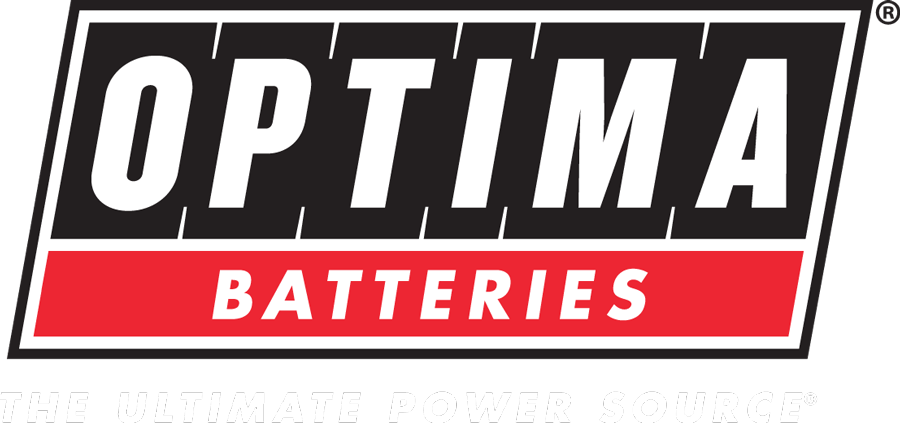
 TECH
TECH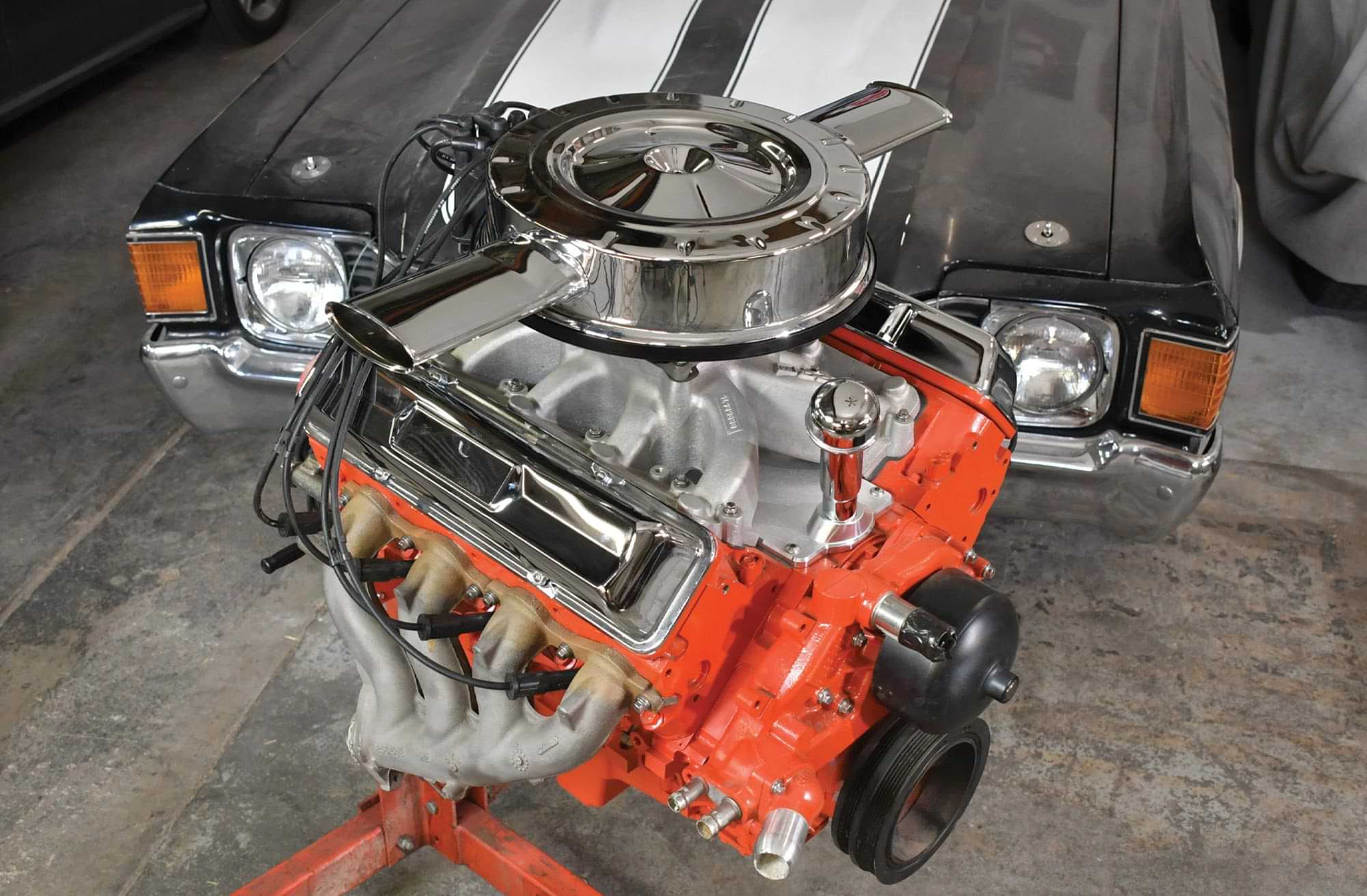

 Photography by The Author
Photography by The Authorbout the only downfall of the GM LS engine platform is the engine’s overall aesthetics. This is especially true when it comes to LS swaps in muscle cars, classics, and vintage hot rods. The eight coil packs and that unsightly plastic intake manifold with sensors and wires scattered just don’t look at home under the hood of a traditional Tri-Five or vintage Nova.
There are a several adapters available these days that allow you to cover the coil packs or change valve covers and even a few four-barrel-style intakes if you choose to go that route. One company that has taken LS beautification to an all-new level is LS Classic Series. Started by a Corvette restoration company and now owned by Lokar, LS Classic not only offers direct-fit cast aluminum script valve covers (that do not require adapters) and billet valley pans with the front oil fill tube, but they also designed complete cast intake manifolds reminiscent of the early GM mechanical fuel injection systems. They can even make your LS look like a big-block or 409!
One of the keys to any LS appearance upgrade is to remove the coils from the valve covers. Not only does LS Classic offer trick remote coil mounts, but they also developed a faux distributor that gives you the ability to route the spark plug wires through it and back to the new coil locations. The distributor is fitted with a points-style cap and is hollow so the wires simply pass through the housing, creating a clean and quite sneaky way to route the plug wires. How’s that for LS trickery?
 FEATURE
FEATURE



 BY Fuelish Media
BY Fuelish Mediat’s sad to say but most of us probably haven’t hung onto our first vehicles. Granted, some of our first cars were P.O.S. hand-me-downs from Mom, but a majority of us were lucky enough to have a legit set of wheels of our own right out of the gate. Sure, that car may have been cool back then, but just imagine how much cooler it could be now with more experience and money to throw at it!
 TECH
TECH Photography by The Author
Photography by The Authorith the crankshaft installed in our Summit Racing small-block Chevy short-block, we’ve hit the first of many milestones when it comes to building an engine. The crankshaft is the backbone of any engine, tasked with handling the stress of the internal combustion process and expected to survive every suck, bang, blow cycle. So, it’s no small feat to have the crank in its cradle with all the specs checking out. It also means we get to advance to an even bigger milestone: installing the rotating assembly.
In addition to the rotating assembly, we’re also going to address the oiling system by installing a Summit oil pump, pan, and spin-on filter adapter. That will put us in a good spot to continue next month with the valvetrain installation.
 FEATURE
FEATURE
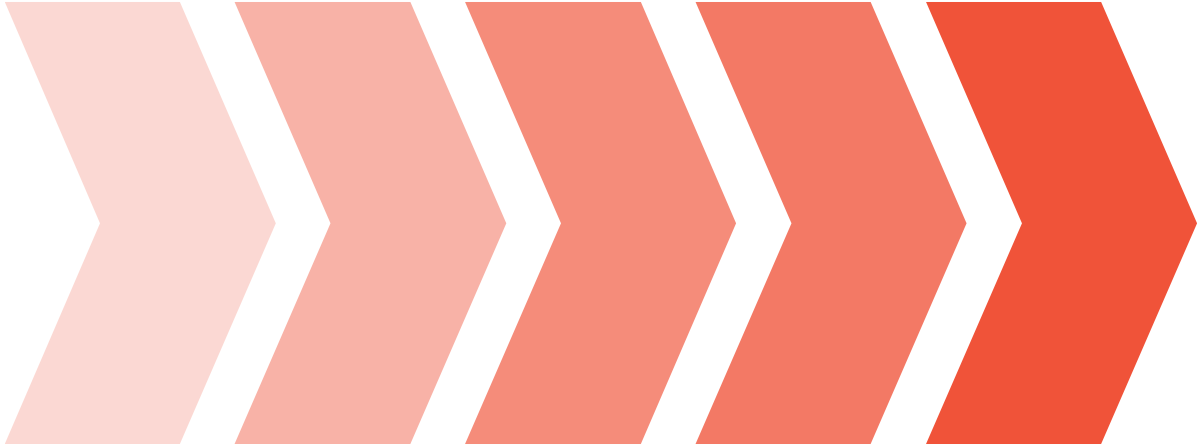
 Photography by Grant Cox
Photography by Grant Coxustin Keith knows what it takes to make horsepower in a late-model muscle car—he’s been upgrading his rides for over 17 years and he’s co-owner of Street Car Takeover, a 19-race drag racing series that features classes from insane Street Outlaw to Daily Driver Mild 12:00 Index Class. He’s also the founder of Killer Performance KC, a shop out of Grain Valley, Missouri, that specializes in high-performance, late-model domestic cars. Suffice it to say, Justin is in the mix when it comes to building kick-ass street cars and straight-line racing. He credits growing up among the local Kansas City car community as the seduction—the lure that got him hooked on the car culture.
When we first met Justin he was throwing down a bunch of hurt in a 2017 ZL1 Camaro with a ProCharger supercharger. He made a bunch of noise and was having a blast with that car for a couple years, but when GM announced that Crush, a color about as close to Hugger Orange as you can get, would be available for the 2019 Camaro, he was all over it. He sold the 2017 Camaro to make room for a spanking-new 2019 model.
 TECH
TECH Photography by The Author
Photography by The Author ith all modern engines either net lash or overhead cam hydraulics, there is an art form that is slowly being lost to history. For older engines with independent stud rocker arms, one of the procedures that was necessary and sometimes done incorrectly was the art of setting valve lash. Engines like a small-block Chevy or Ford with mechanical lifters required a clearance between the rocker arm and the valve tip, which was usually set hot. Hydraulic lifters were less critical but still required a preload. Decades ago, this was done with the engine running and open valve covers, making a huge mess when the engine sprayed oil over the entire engine compartment from 16 tiny lawn sprinklers.
Thankfully, we’ve progressed to a more civilized and far less messy way to accomplish this same task. The valve covers of course still have to be removed, but the engine doesn’t have to run. A sharp engine builder who has been lost to history created this simple procedure that we’ll now pass along for future engine enthusiasts.
The procedure is simple and straightforward. There are other procedures that can be used, but we’ve found that this one is the simplest to remember and does not require you to memorize a firing order or where in the sequence the next step must originate. That can be confusing. This procedure also makes sense from a logic standpoint if you understand how camshafts work.
 FEATURE
FEATURE
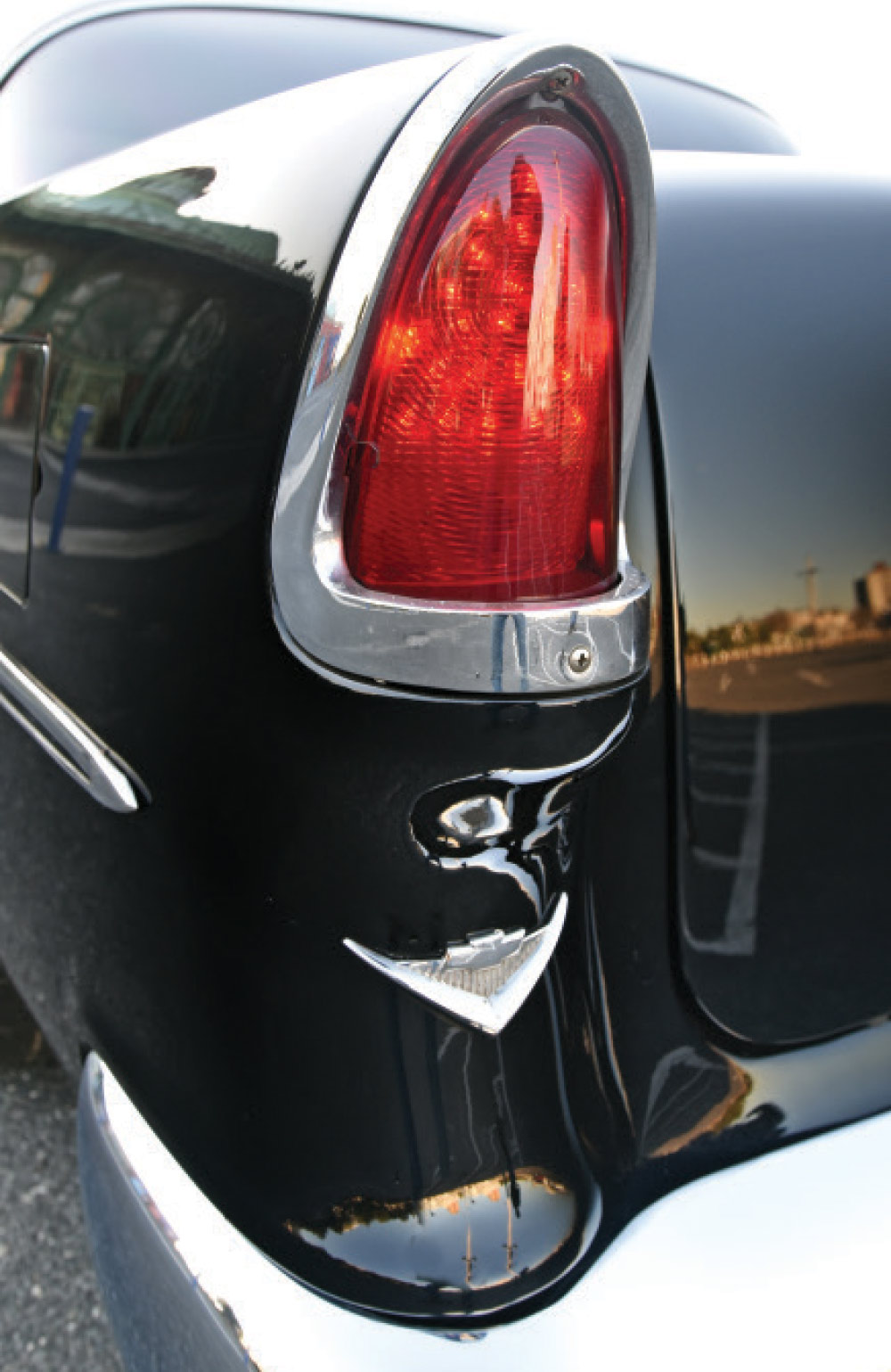


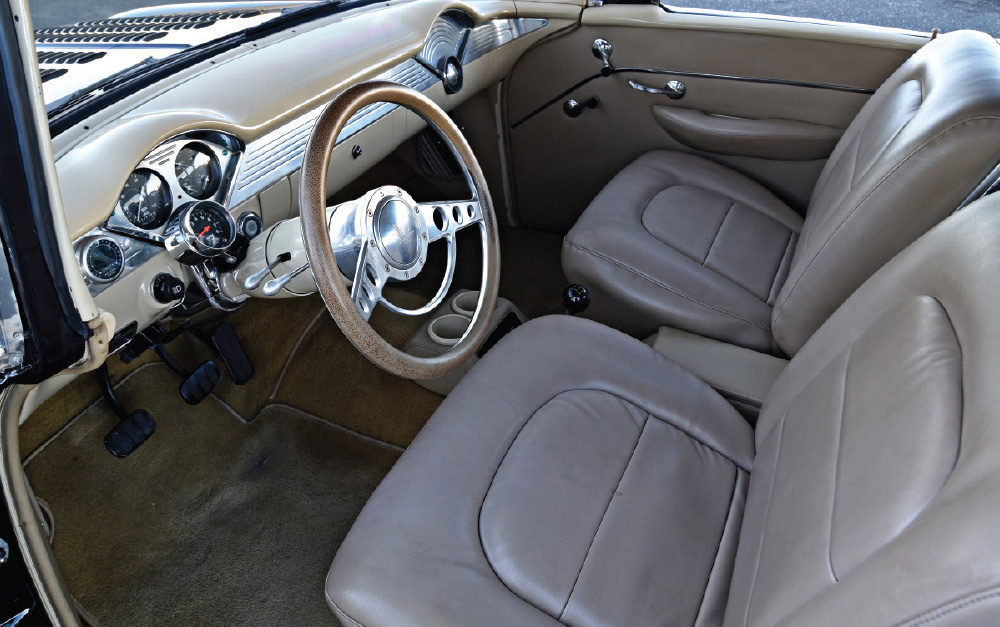
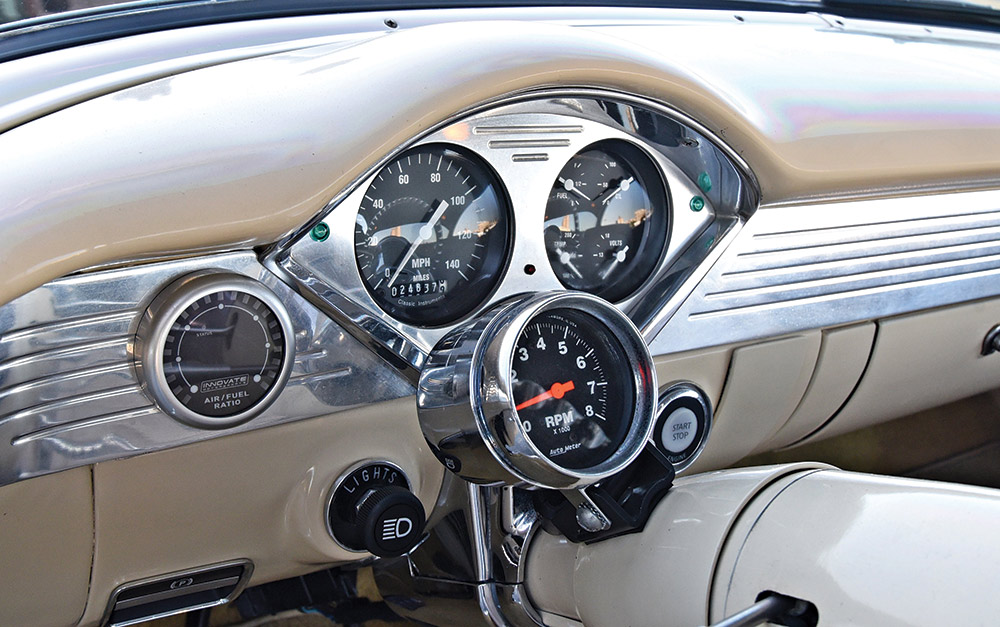

 Photography by The Author
Photography by The Authorince his early youth, Ron Rauso of Long Branch, New Jersey, always had a thing for Chevy’s iconic 1955 model. It was that ever-accelerating admiration for the first-year Tri-Five that drove the teenager to snatch one up for his first dose of four-wheeled freedom shortly after earning his driver’s license.
However, years later, it was his son, Christopher, who pushed his dad to revisit his youth and procure another 1955 Chevy for their first father-son build. Even though he was short on years, the young gun stepped up and helped dad build a Bowtie that was a blend of their ideas of what a 1955 should be, no matter what the skeptics said.
 TECH
TECH
 BY ACP Staff Videography by Ryan Foss Productions
BY ACP Staff Videography by Ryan Foss Productionshen Chevrolet introduced the Camaro in 1967 it was sort of a design-it-yourself ponycar. Depending on the purchaser’s preference it could be had with a six-cylinder engine or small-block V-8s measuring 302, 327, or 350 ci or a 396ci big-block. Of course it was the Z/28 302 option that would become legendary, but Chevrolet would continue to offer a variety of powertrain combinations in the Camaro from mild to wild.
For most enthusiasts all first-generation Camaros (1967-1969), regardless of the drivetrain, are desirable—and we agree. They’re great-looking as well as light and nimble, making them a pleasure to drive. But, like all cars, they will suffer from the ravages of time and travel.
As luck would have it, we were able to find an original 1969 Camaro. The coupe is presentable with fair paint and interior; underhood is the L14 optional engine, a 307ci V-8. While the temptation with such a find is to rip it apart and make a variety of modifications right away (which always takes longer than planned) our goal was to first make any needed repairs so we could drive and enjoy and make updates as time and money allow.
 FEATURE
FEATURE Photography BY Ryan Miller
Photography BY Ryan Miller
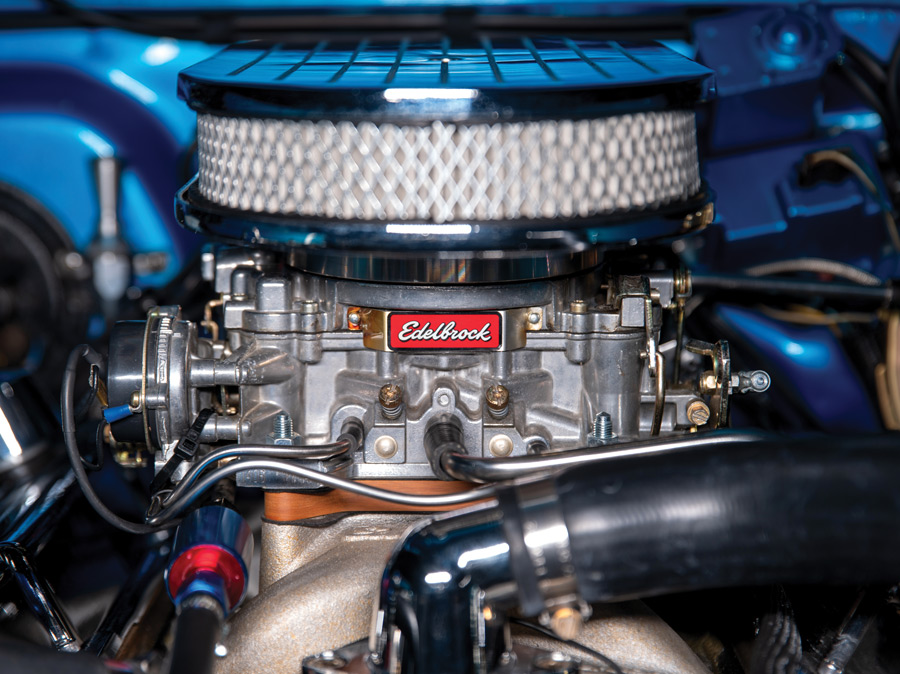
That’s the short version on how Don’s wheels began to spin in the car world. Being a “car guy” for over 57 years, the Nevada, Texas, resident has owned a 1937 Ford convertible (2014-2015 Goodguys Builder’s Choice award at Texas Motor Speedway), the aforementioned 1954 Chevy, and he bought a new 1967 GTO, which he sold rather abruptly due to being drafted in 1968–an unfortunate situation but the GTO had to go. After returning from the Army, he bought a 1970 Dodge Challenger, got married, then made way for a 1948 International pickup. Don looks back on that lowered and patina’d hauler and tells us, “it may have been the first true rat rod in the Dallas area. It was a rat rod way before rat rods were a thing.”

 TECH
TECH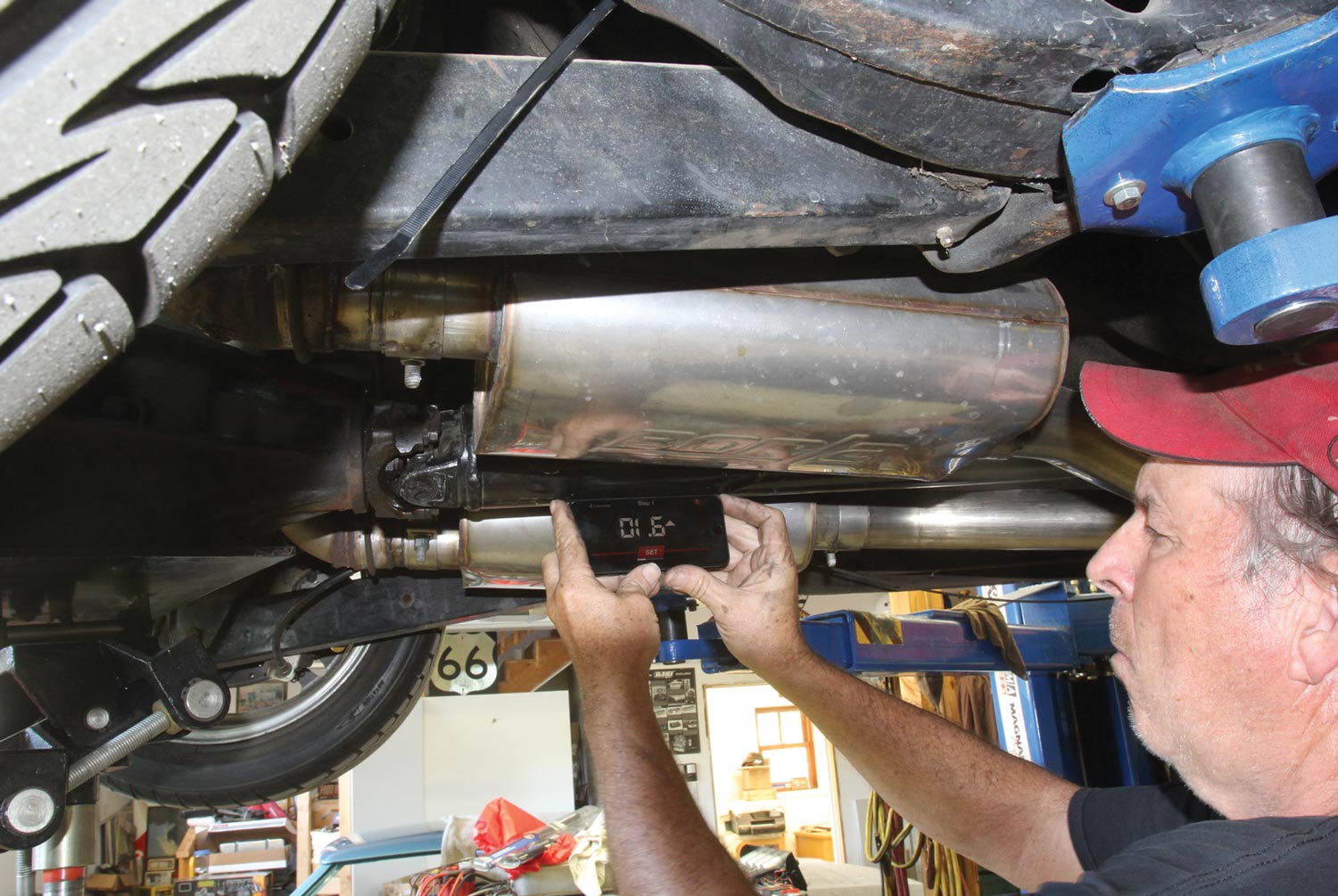
 Photography by The Author
Photography by The Authorngine and driveline swapping has long been a staple of building performance cars since the first rodders began swapping parts in the back of a blacksmith’s shop. Today’s market is full of LS swap parts, upgraded transmissions, and a myriad of rear axle opportunities. But along with all this parts customizing is the reality of ensuring all these parts work together, so your upscale machine sings along nicely on the highway.
One area that is universally overlooked is the link between the transmission and the rear axle. Sure, you spec’d the length of that custom driveshaft right down to 1/8 inch and it now fits snugly in between the engine and rear axle. But is the angle correct? Just because the driveshaft doesn’t vibrate or rattle the inside rearview mirror off its mount on deceleration doesn’t mean the driveshaft angle is correct. It’s really something that should be verified.
To minimize the confusion around measuring the driveline operating angle, TREMEC has come up with a slick smartphone application to measure and compute the operating angles for you. It turns out that a proper operating angle has a very specialized set of requirements.
Advertiser
- ACES Fuel Injection87
- Aldan American69
- American Autowire57
- American Legend Wheels71
- Art Morrison Enterprises39
- Auto Metal Direct49
- Automotive Racing Products21
- Borgeson Universal Co.51
- Bowler Performance Transmissions83
- Classic Industries27
- Classic Instruments9
- Classic Performance Products4-5, 85, 92
- Concept One Pulley Systems83
- Dakota Digital91
- Danchuk USA13
- Dynamat41
- Eddie Motorsports63
- FiTech EFI35
- Flaming River Industries59
- Gandrud Chevrolet87
- Golden Star Classic Auto Parts7
- Granatelli Motor Sports71
- Heidts Suspension Systems69
- HushMat83
- John’s Industries83
- Lokar2
- National Street Rod Association65
- New Port Engineering85
- Optima Batteries11
- Original Parts Group87
- Performance Online23
- PerTronix29
- Powermaster Performance73
- Schwartz Performance85
- Scott’s Hotrods79
- Speedway Motors55
- Strange Engineering73
- Vintage Air6
- Wilwood Engineering43
- Year One85
 BOWTIE BONEYARD
BOWTIE BONEYARD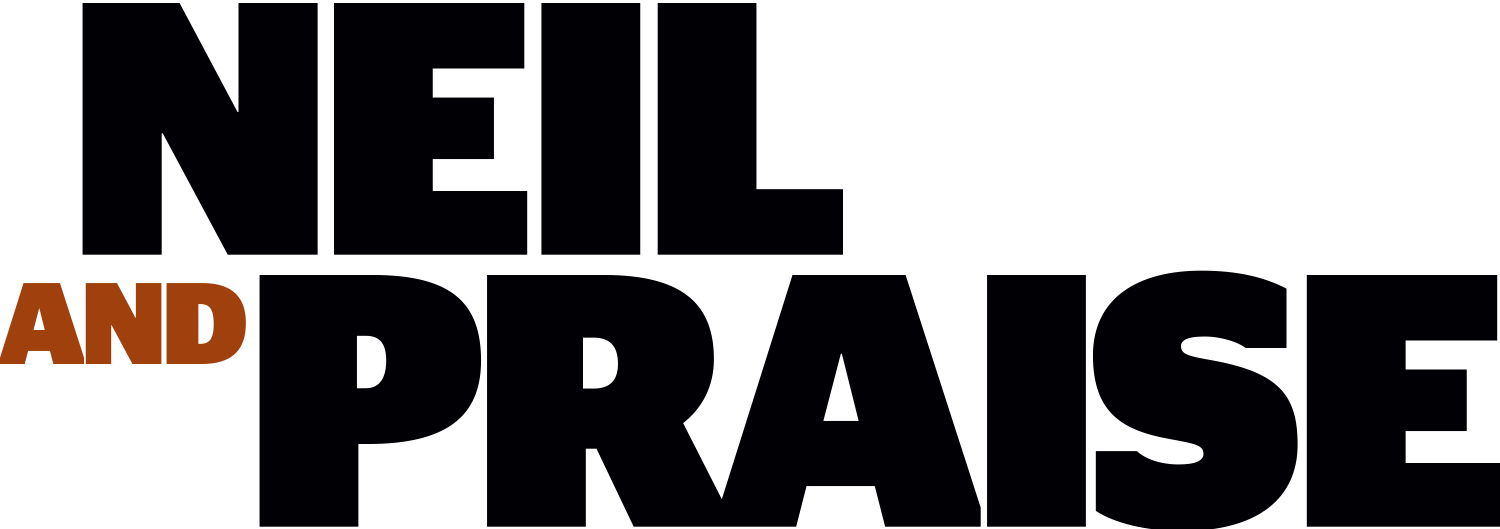
 Photography by The Author
Photography by The Authoreil Young sang it best, “rust never sleeps.” And whether you’re a fan of Young’s earlier work with The Buffalo Springfield (the “The” is how the band expressed their name) or his later experimental stuff like Trans (what was he thinking?), “there comes a time” when every car and truck takes its last journey on “the human highway” and is parked for the final time.
In this month’s collection of Bowtie relics we’re wandering the back roads of rural Massachusetts where we’re “after the gold rush.” So with apologies to Neil, “don’t let it bring you down” to see these once-prime machines before the “wrecking ball” strikes.

